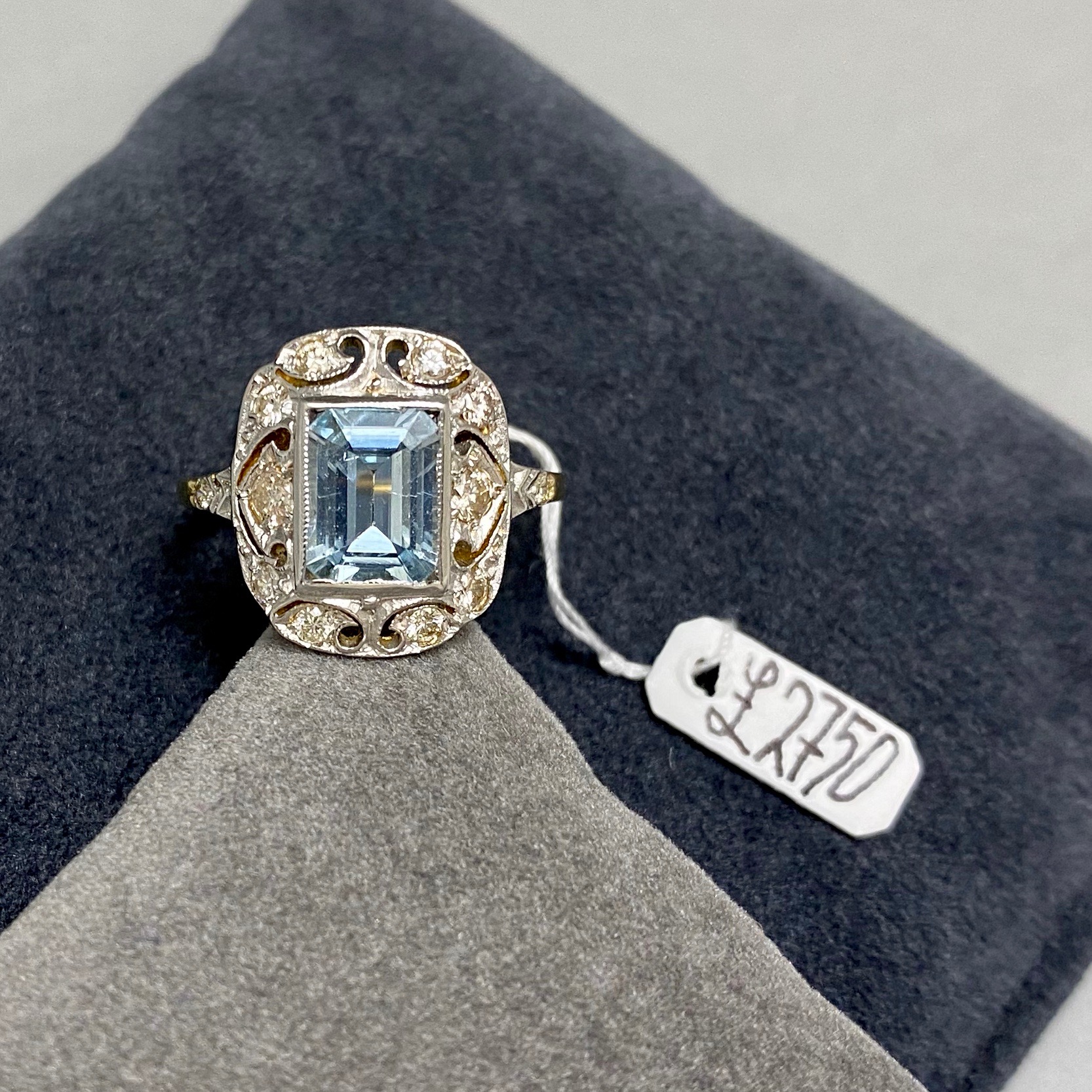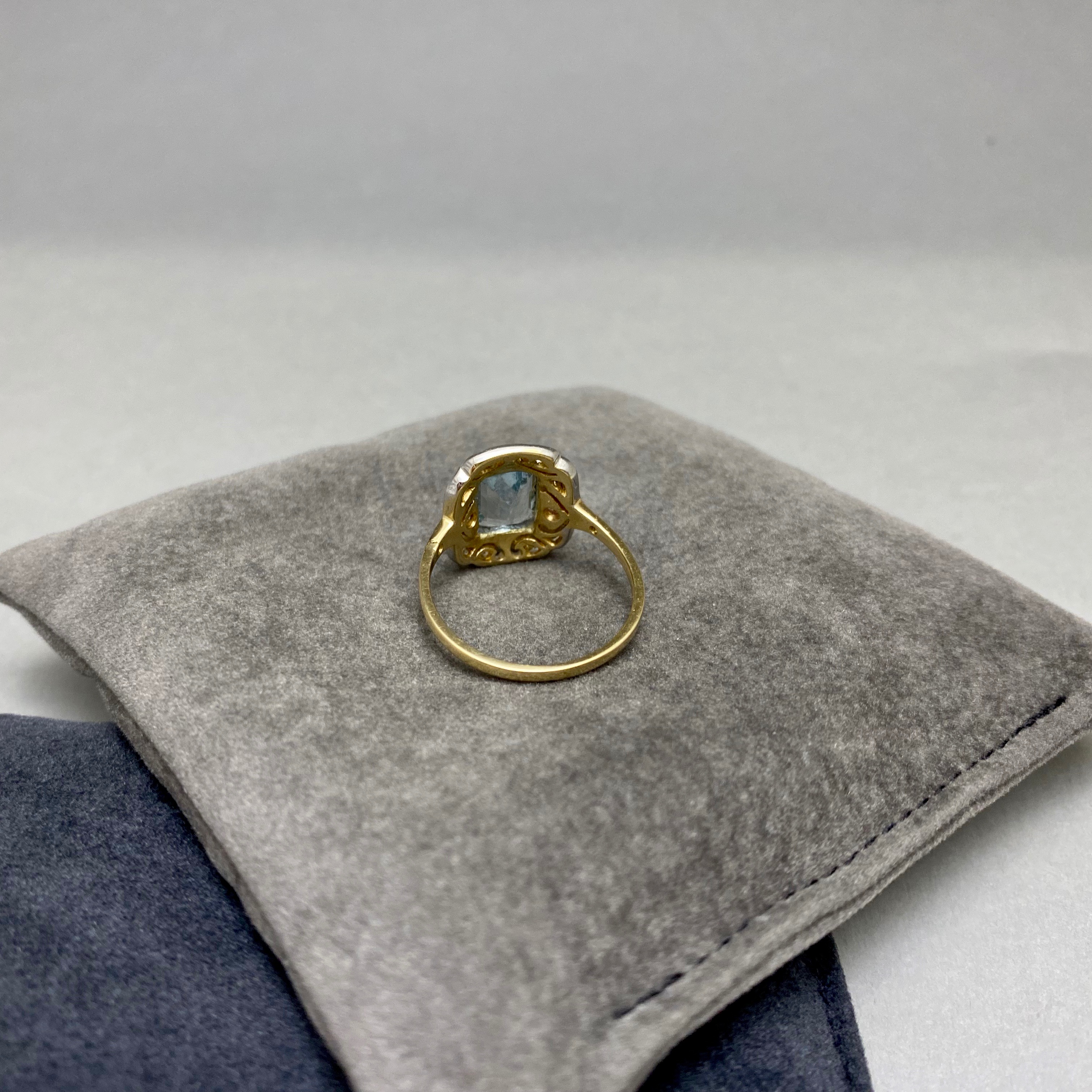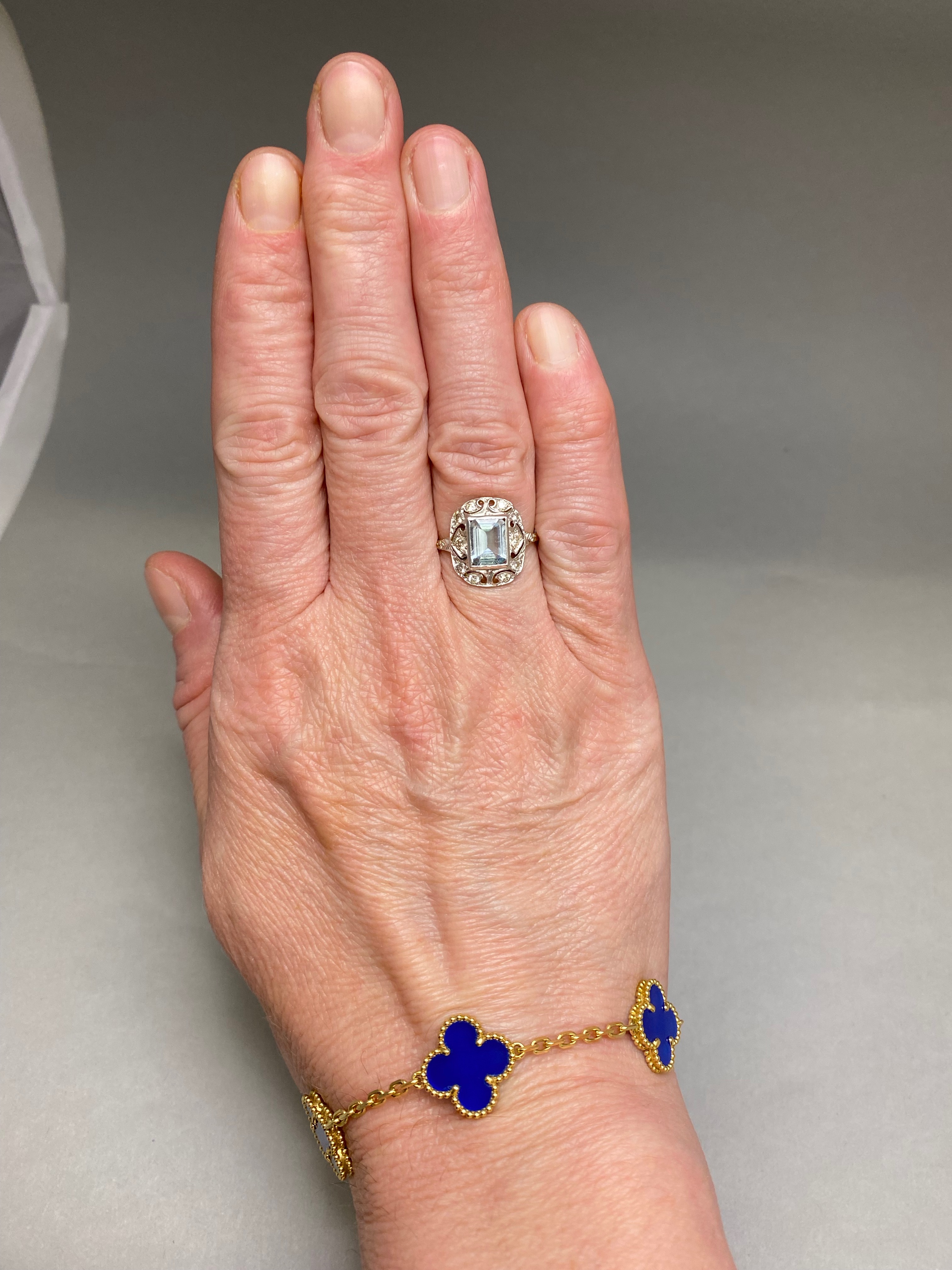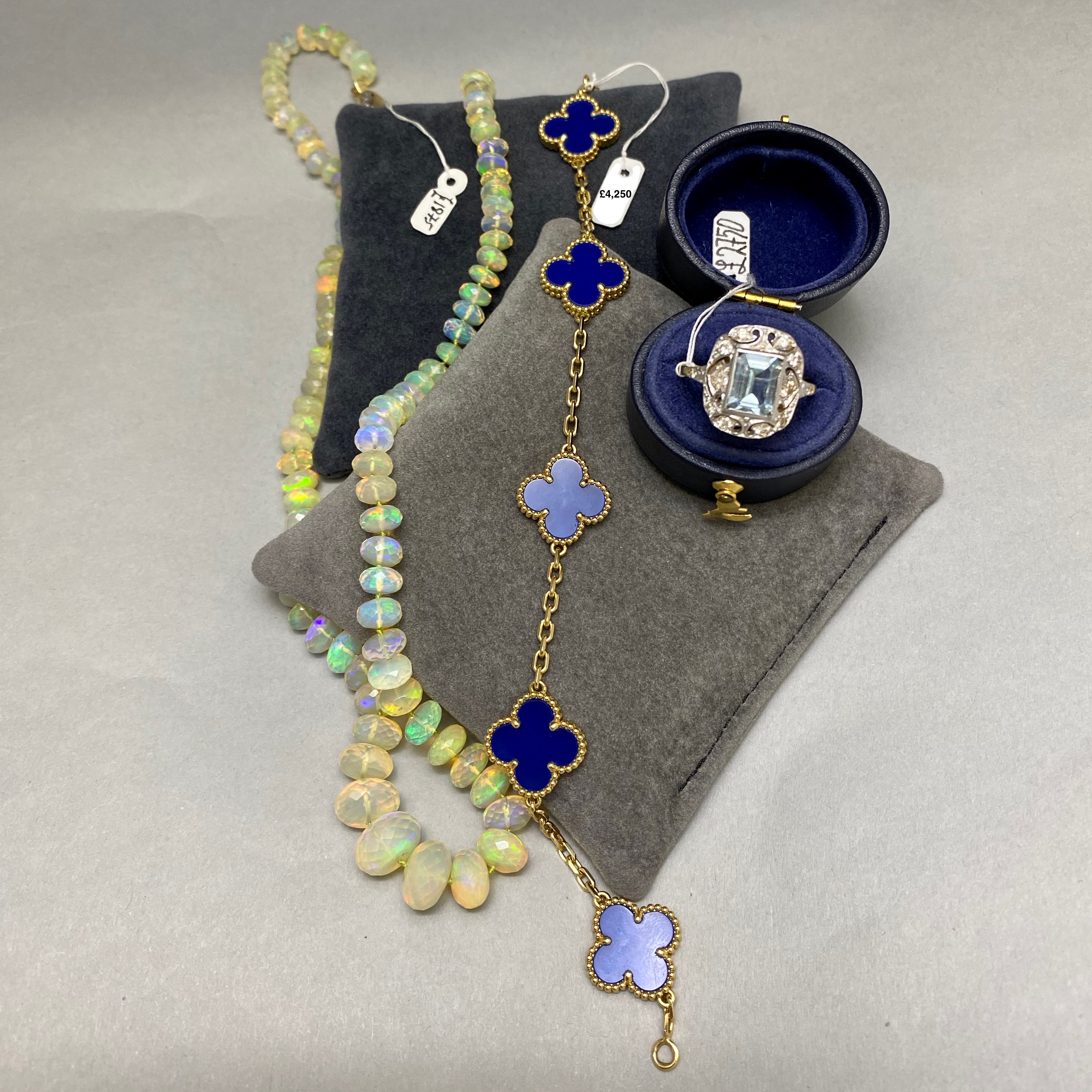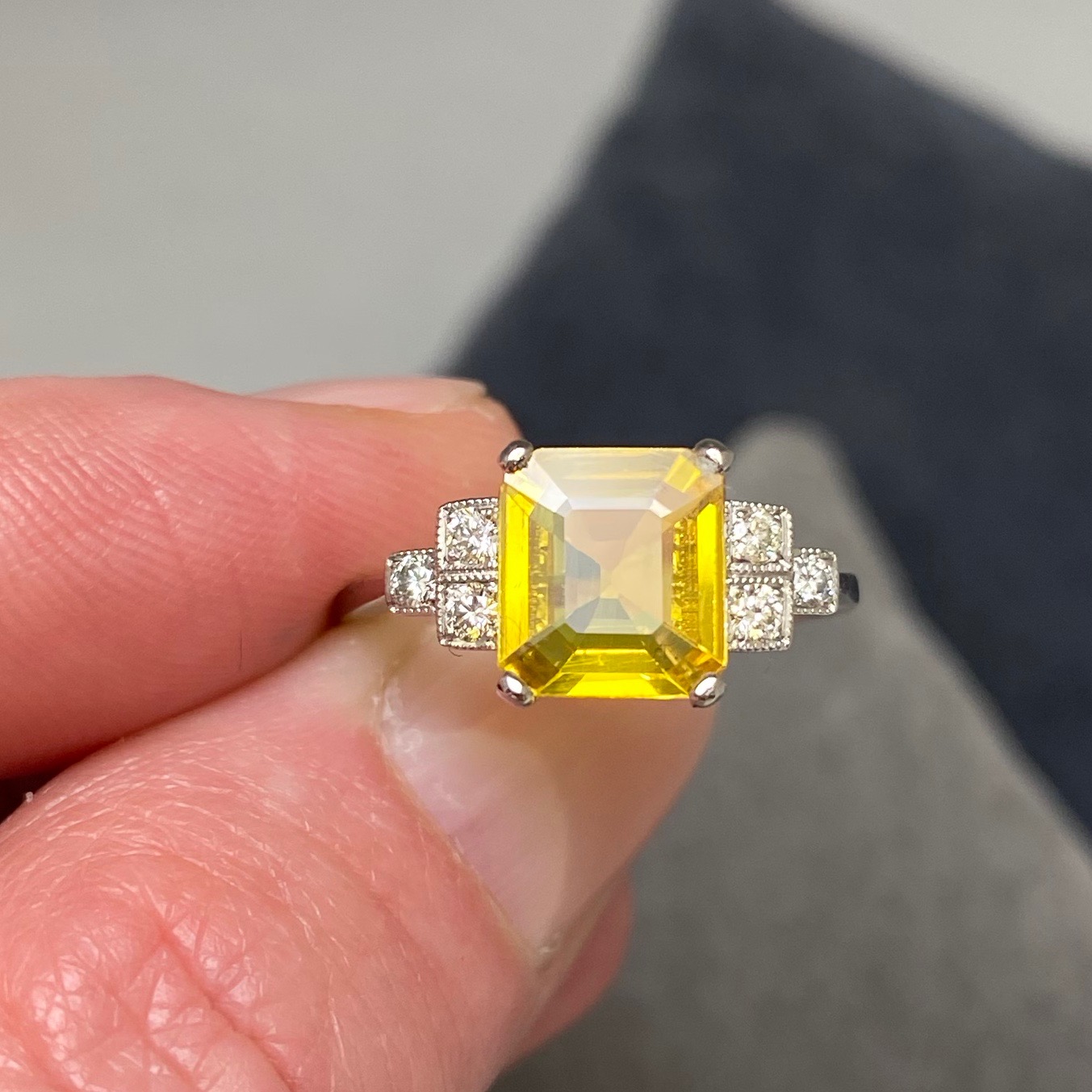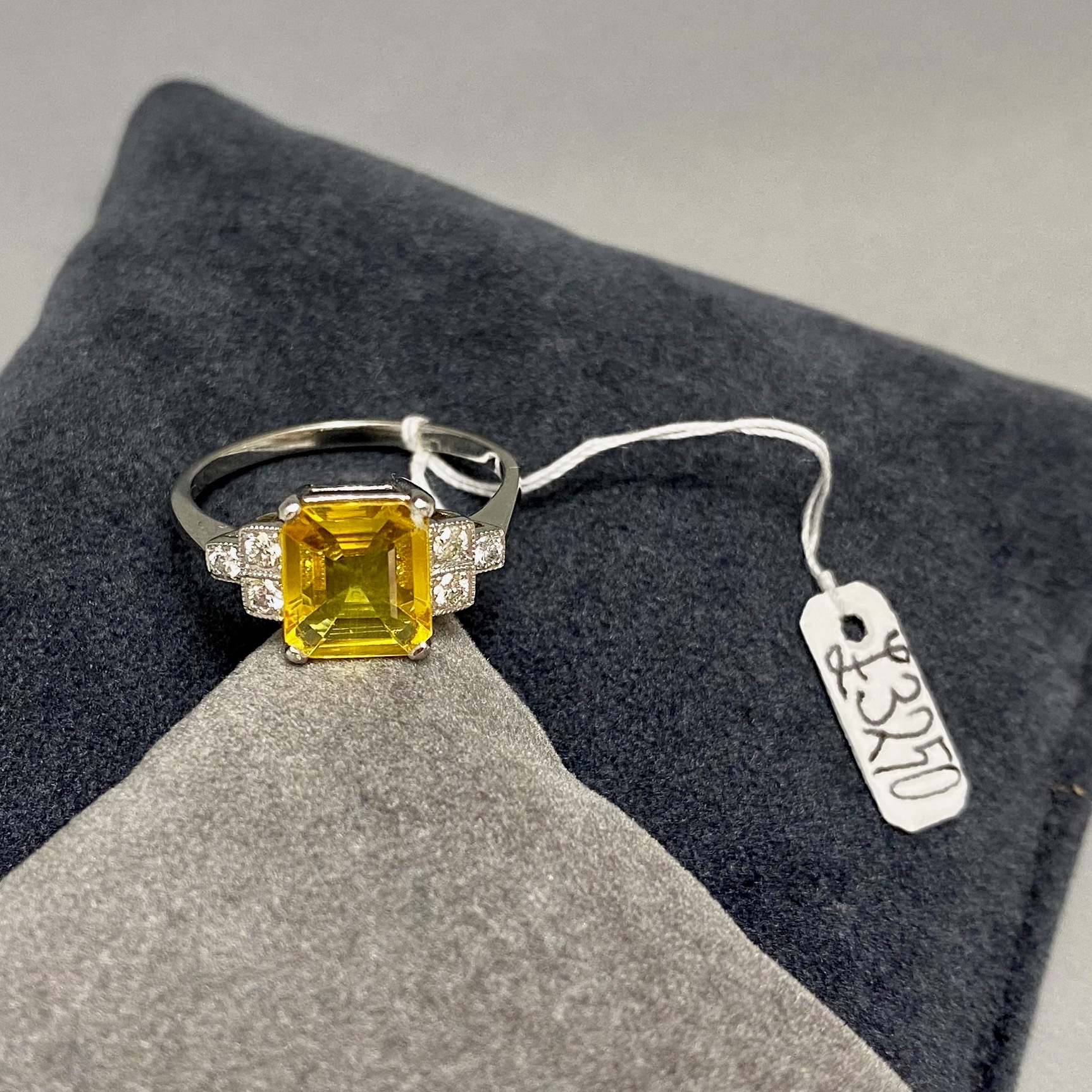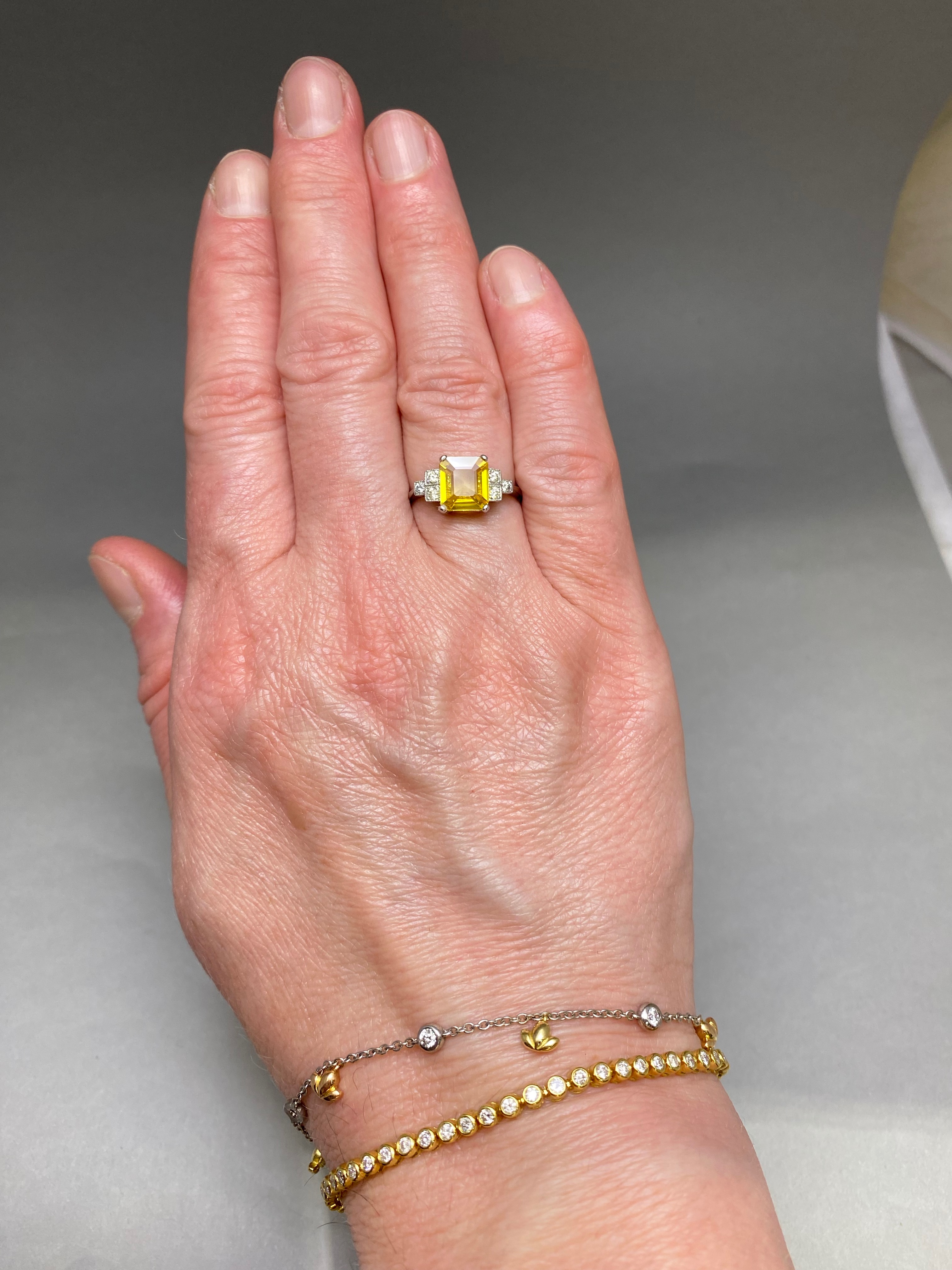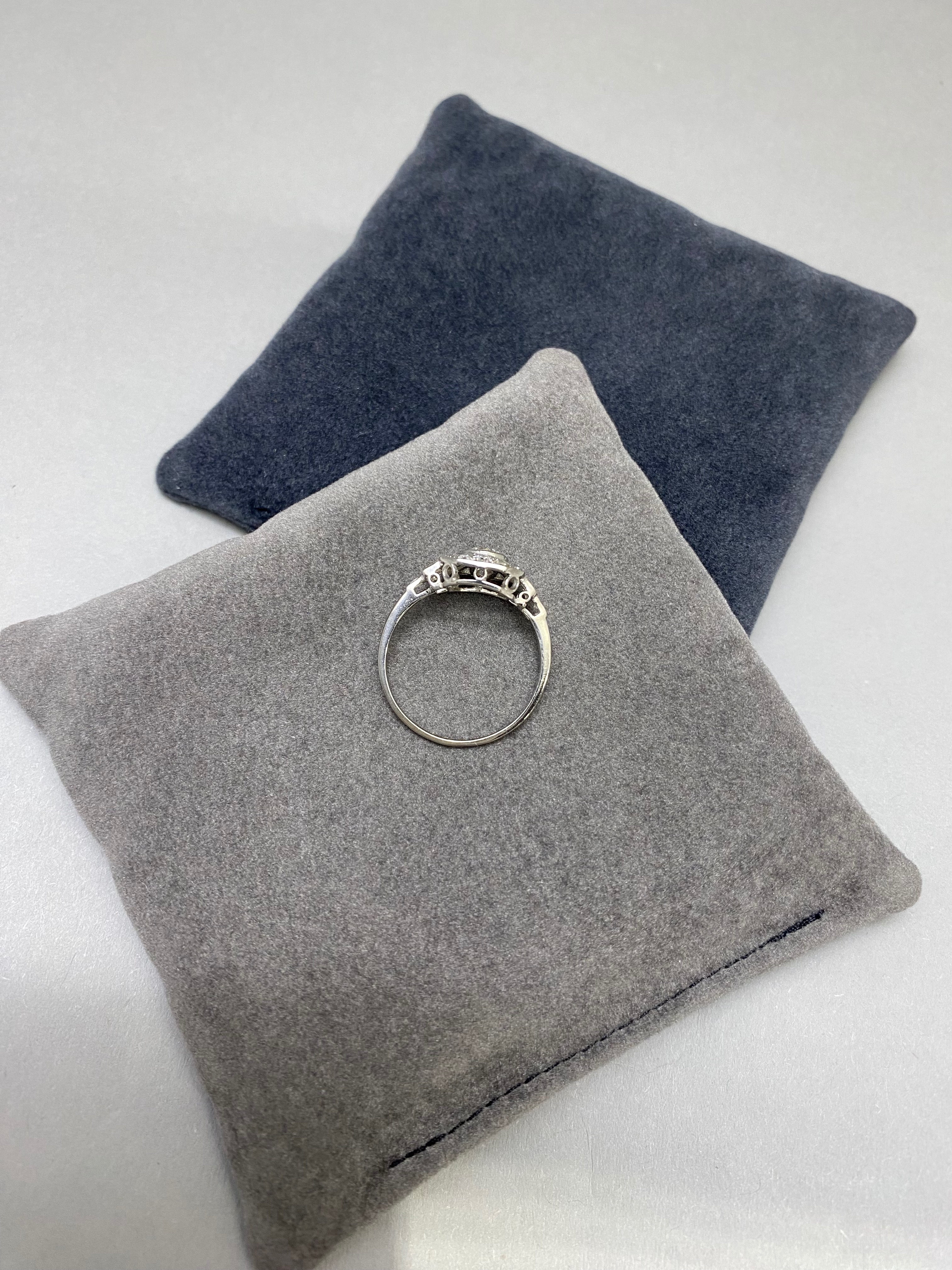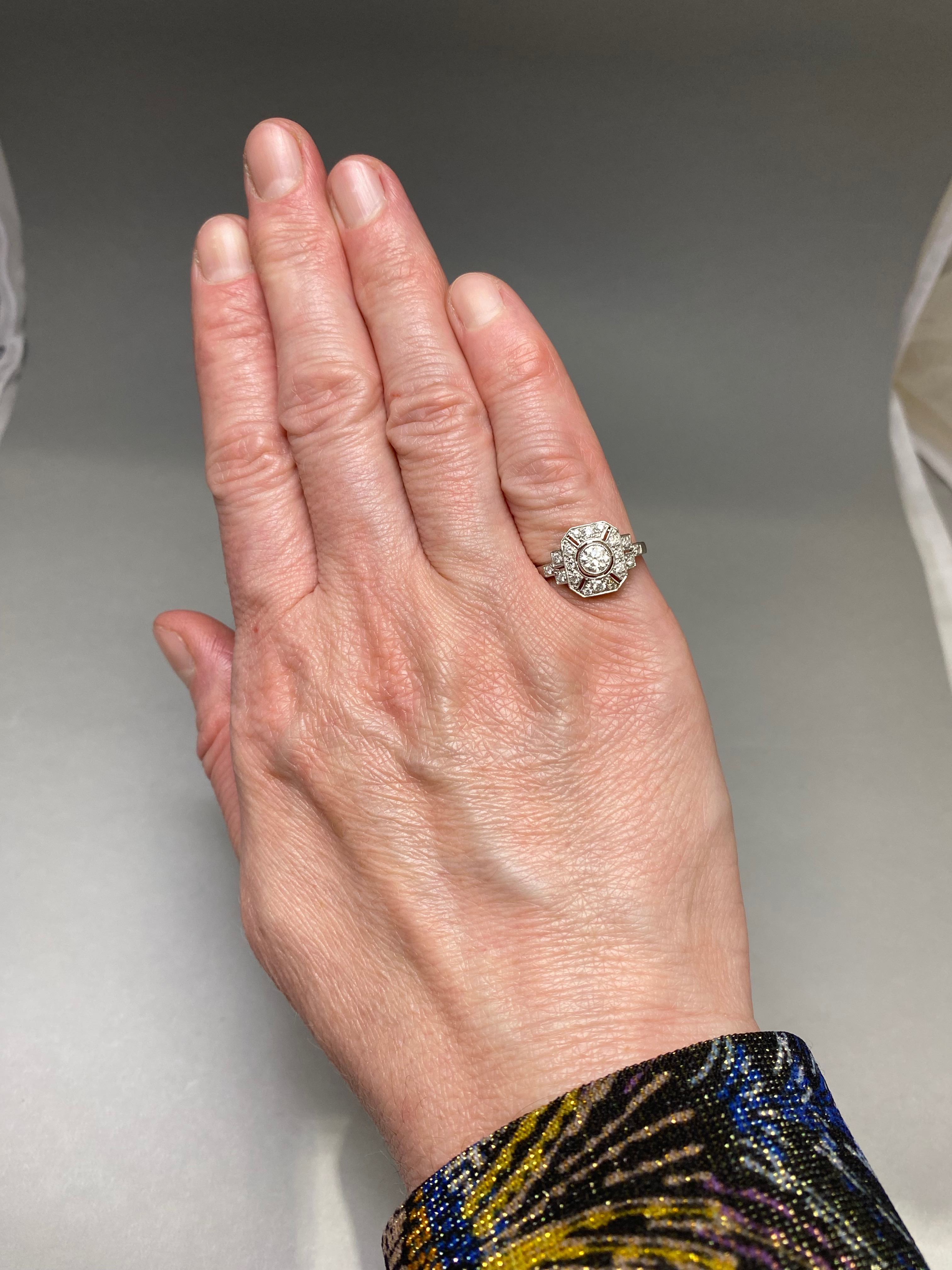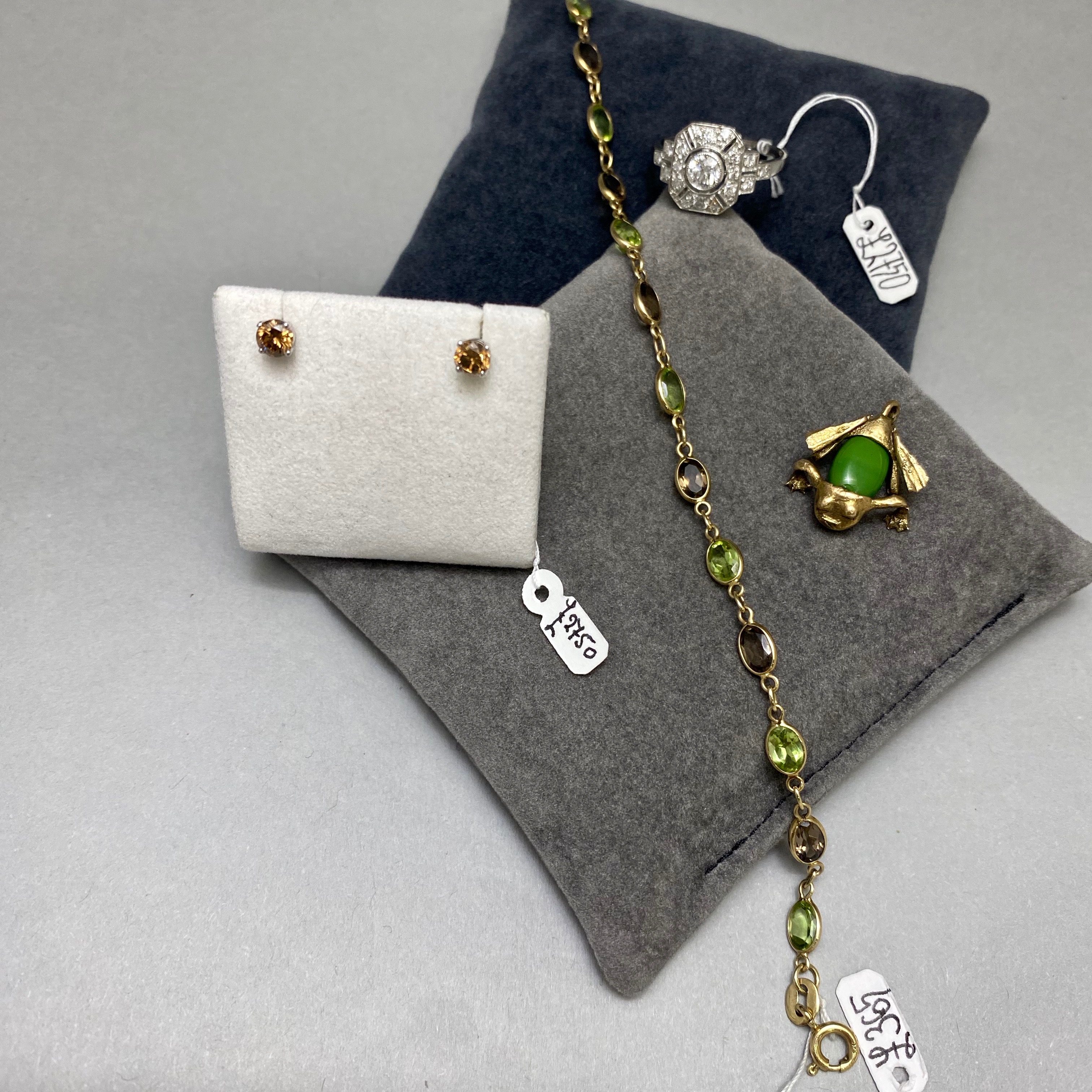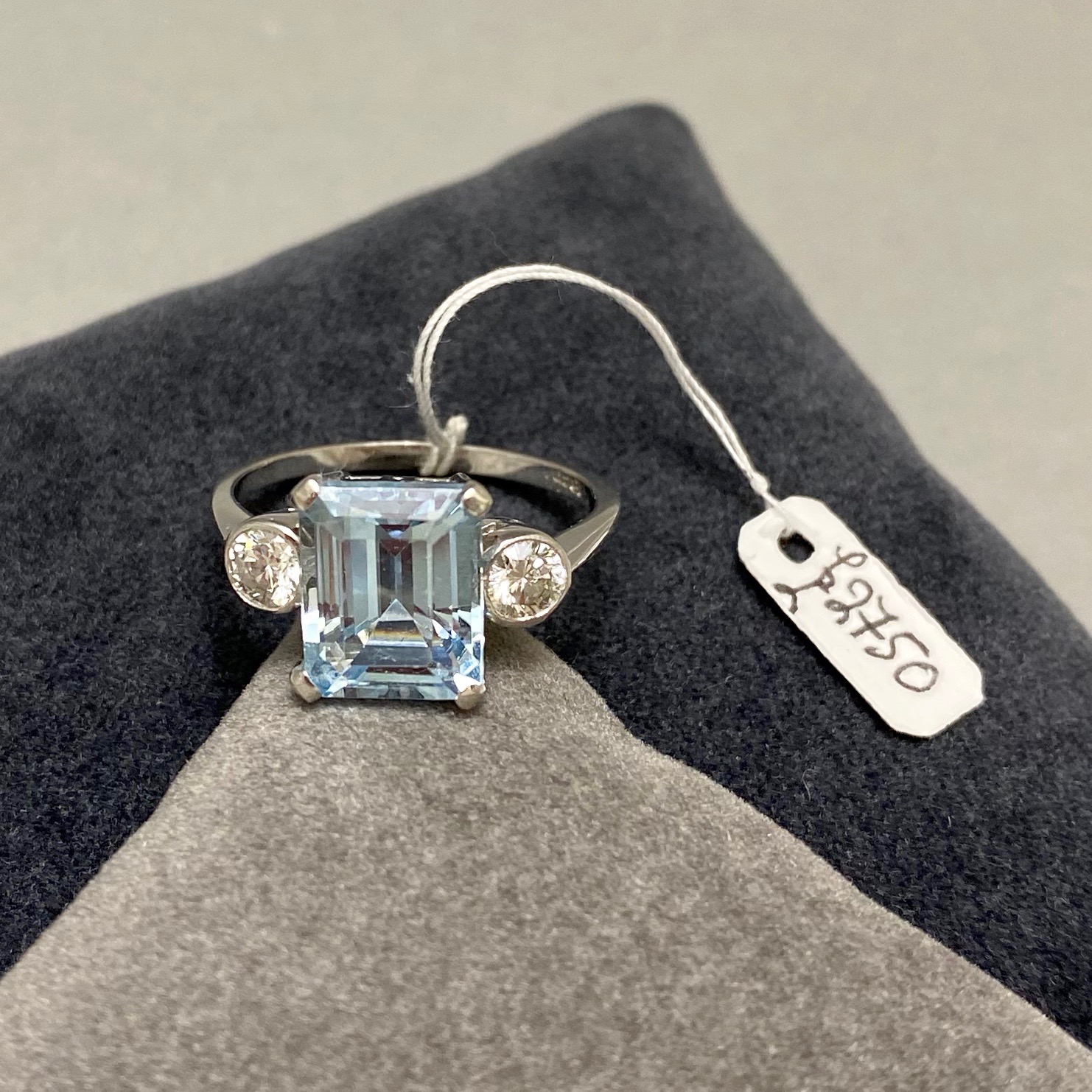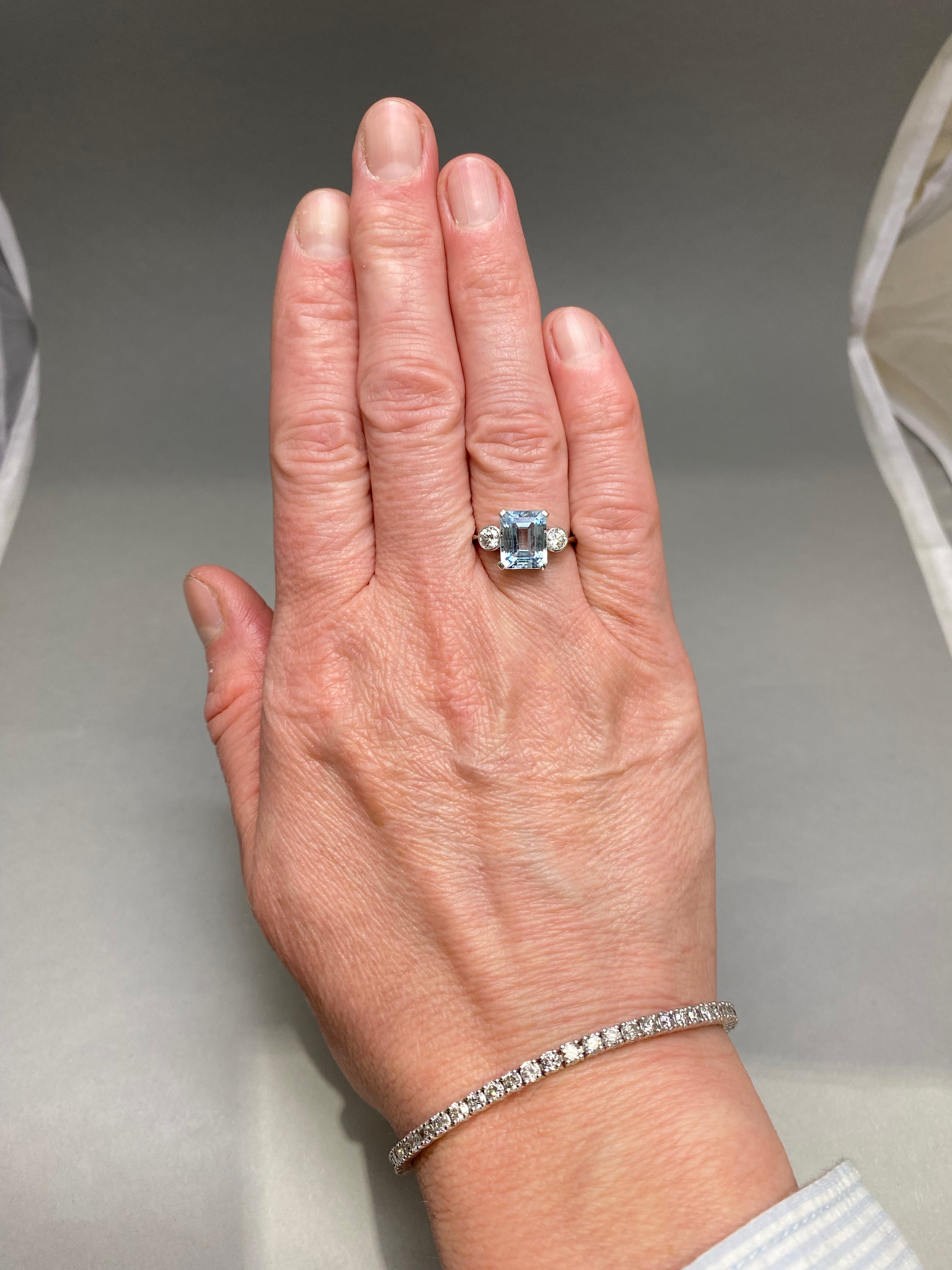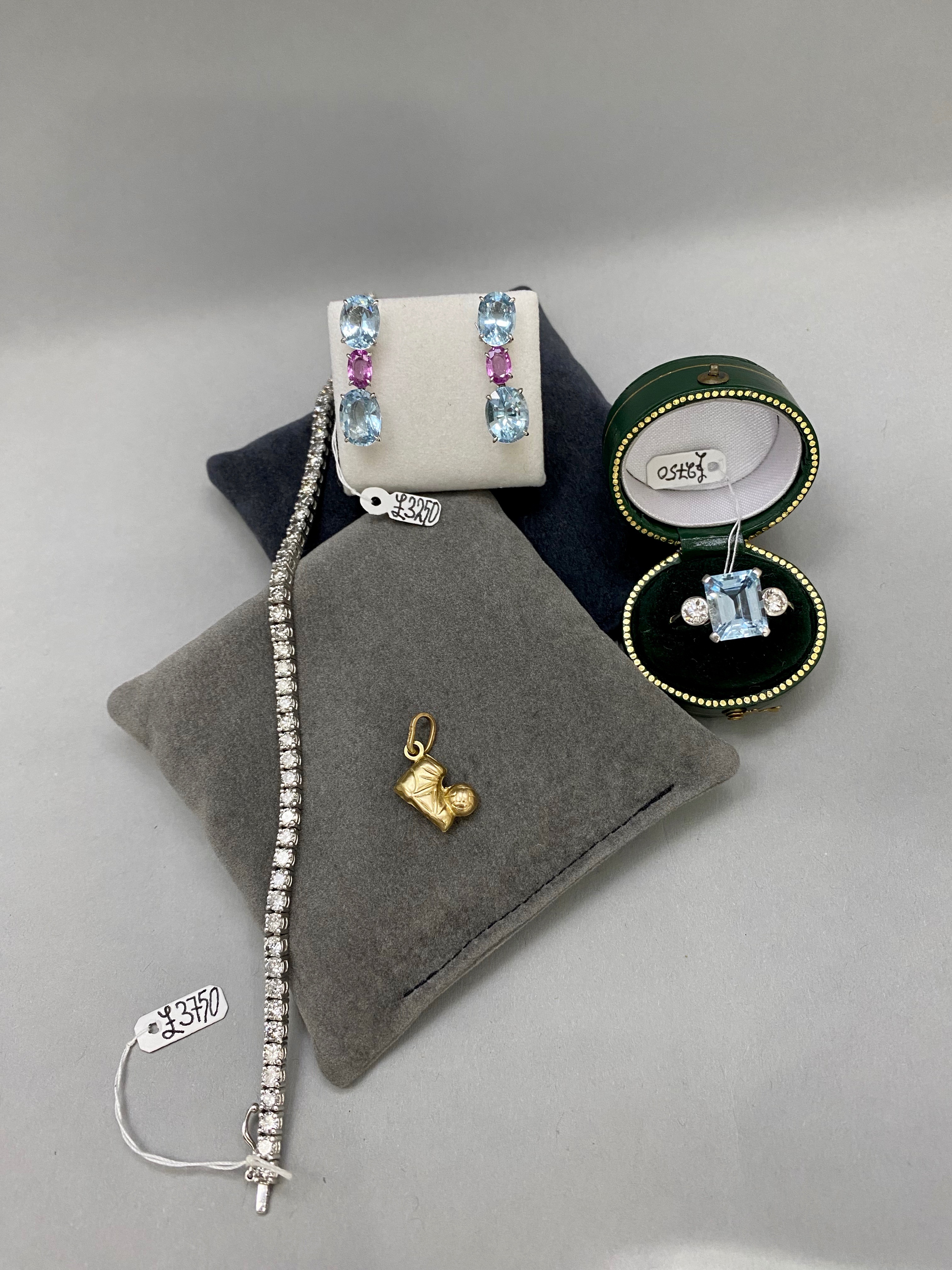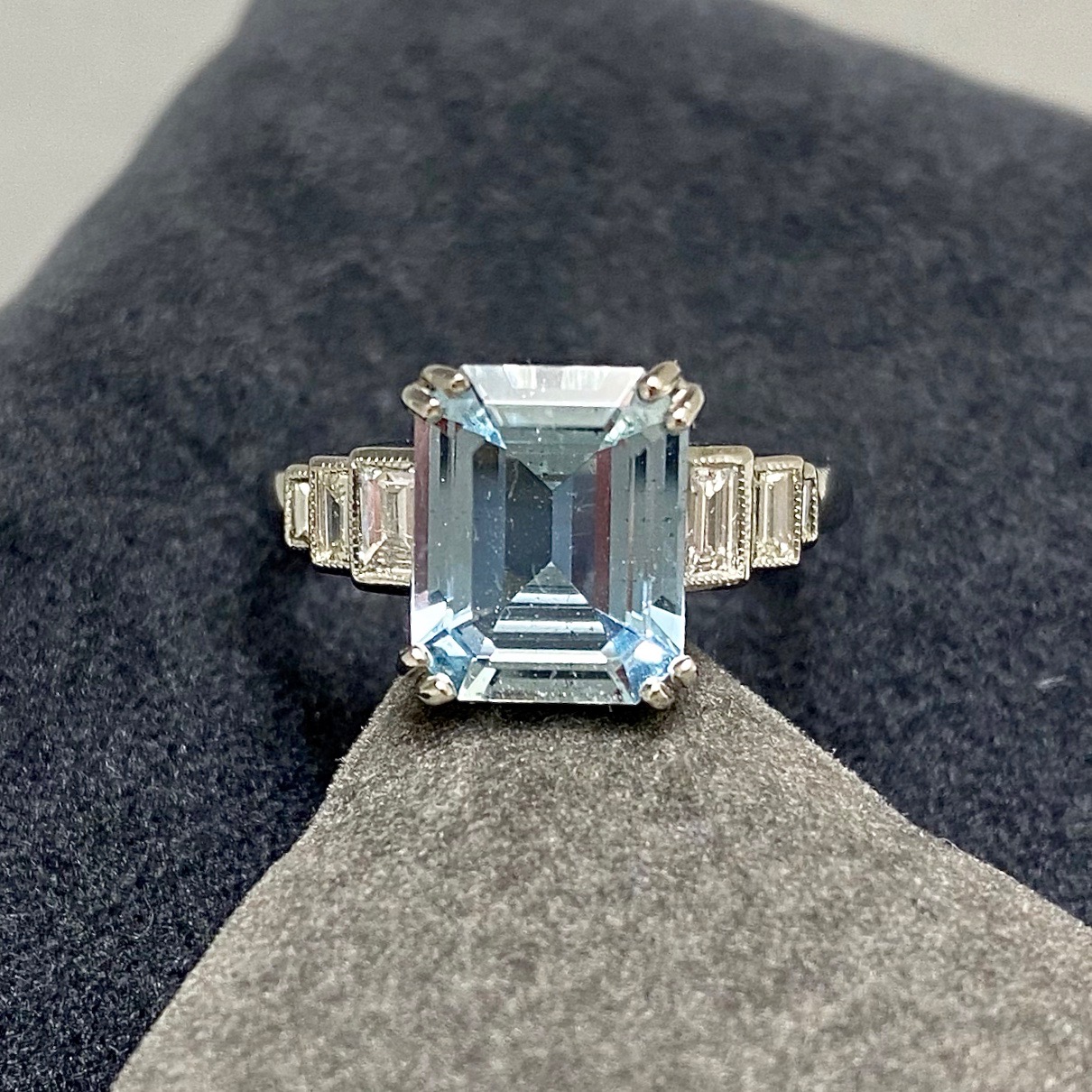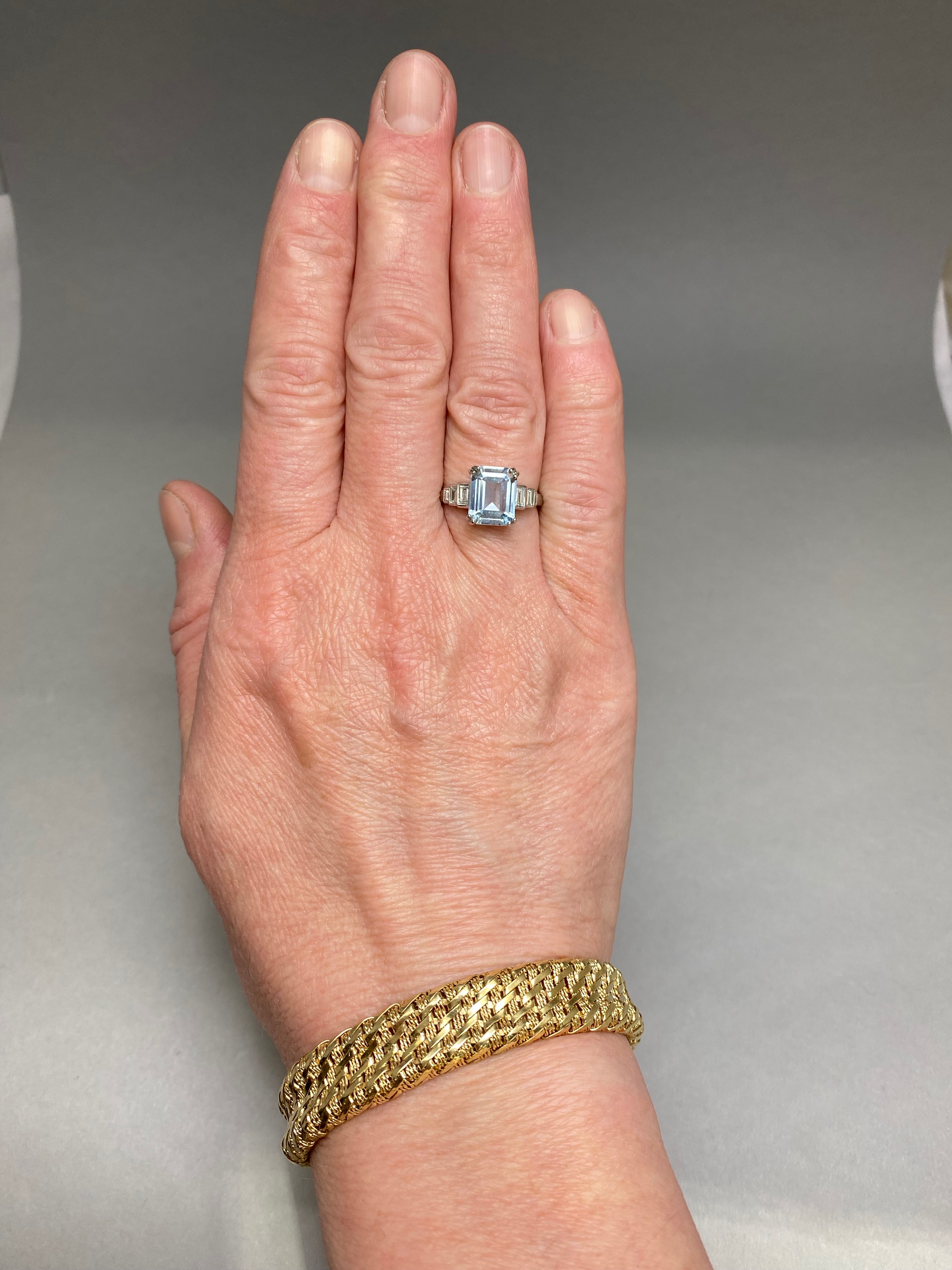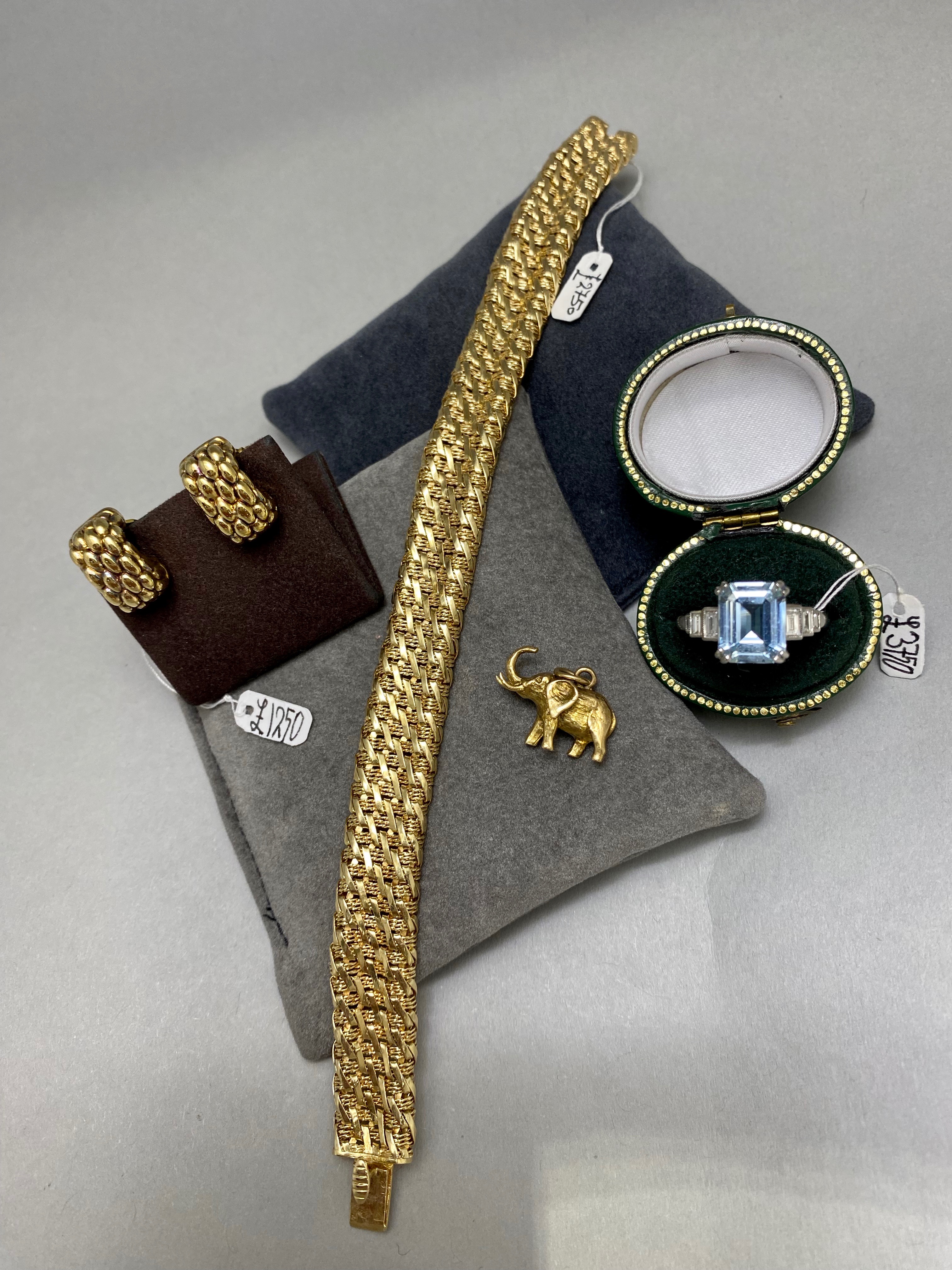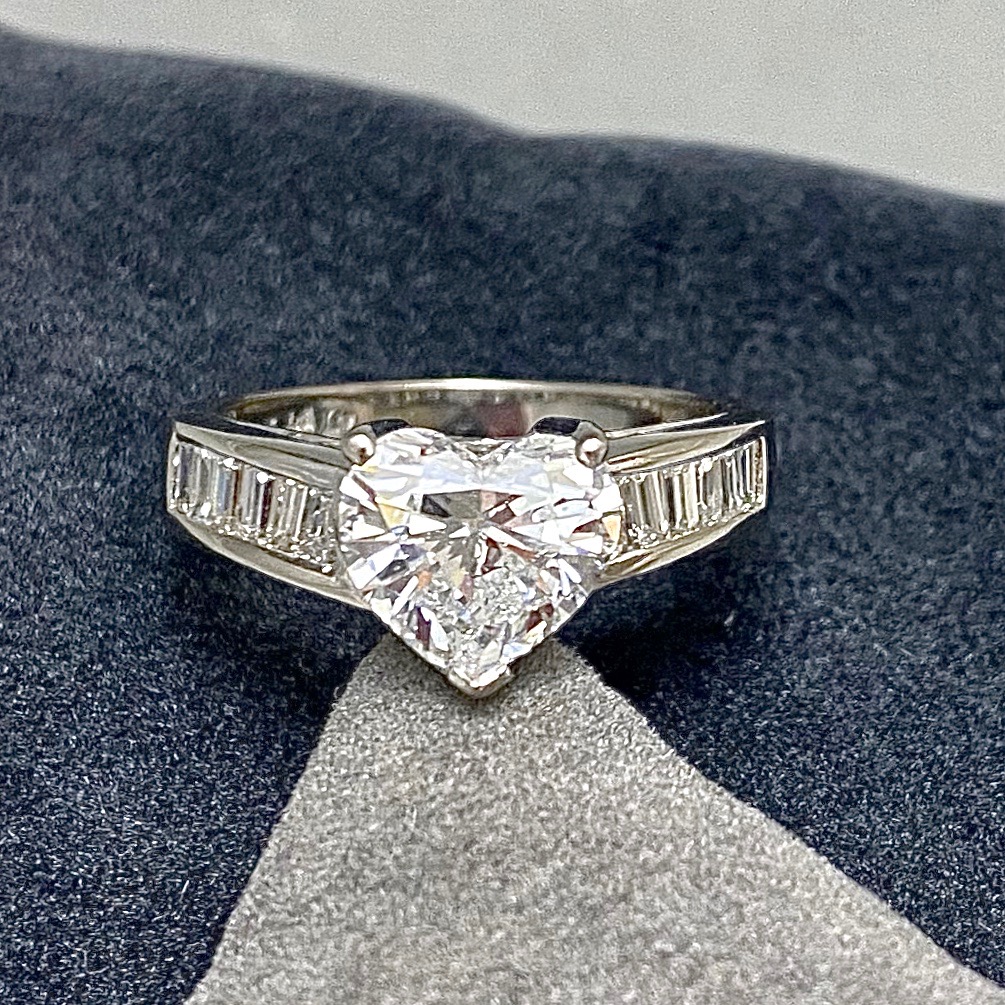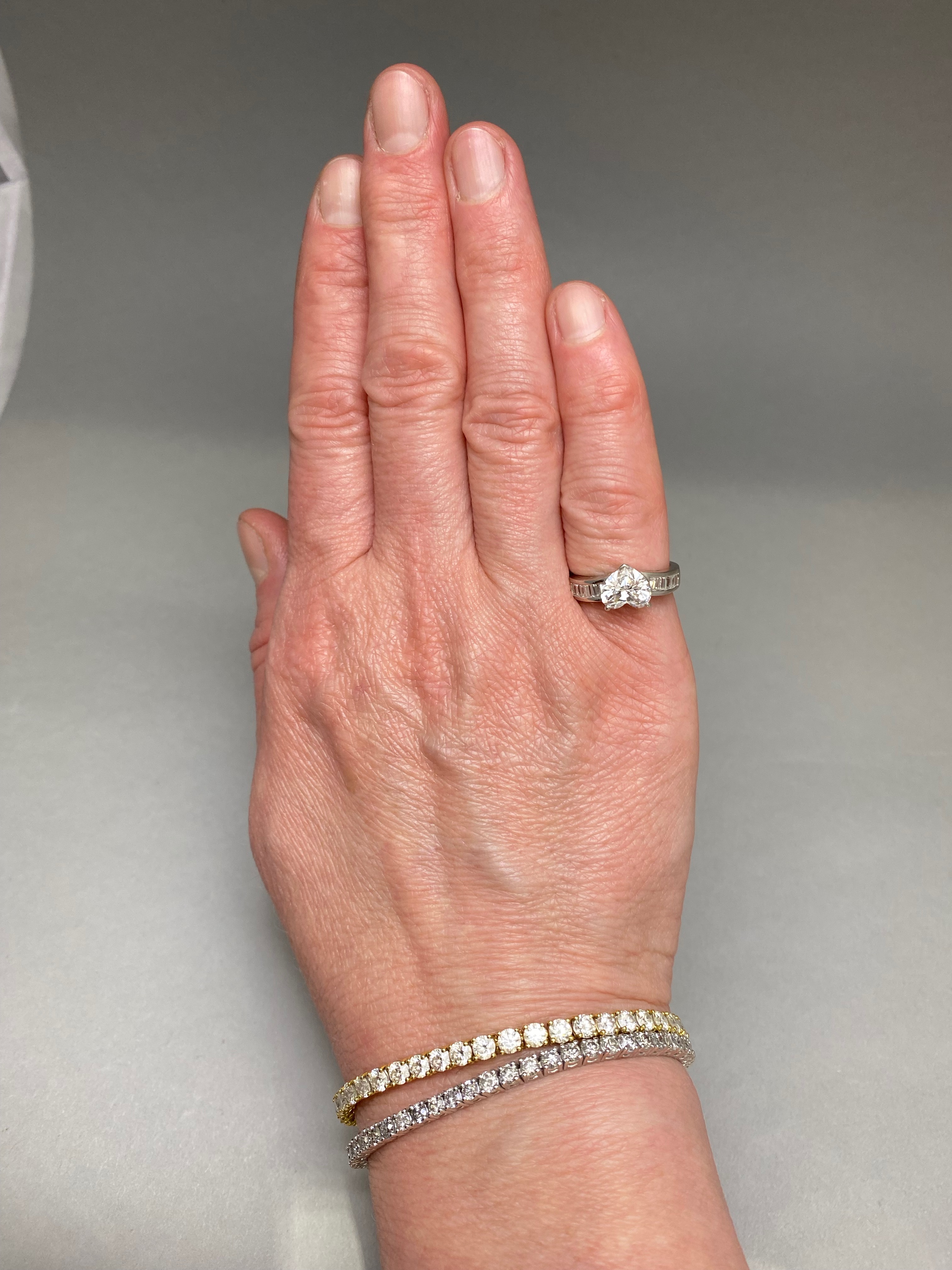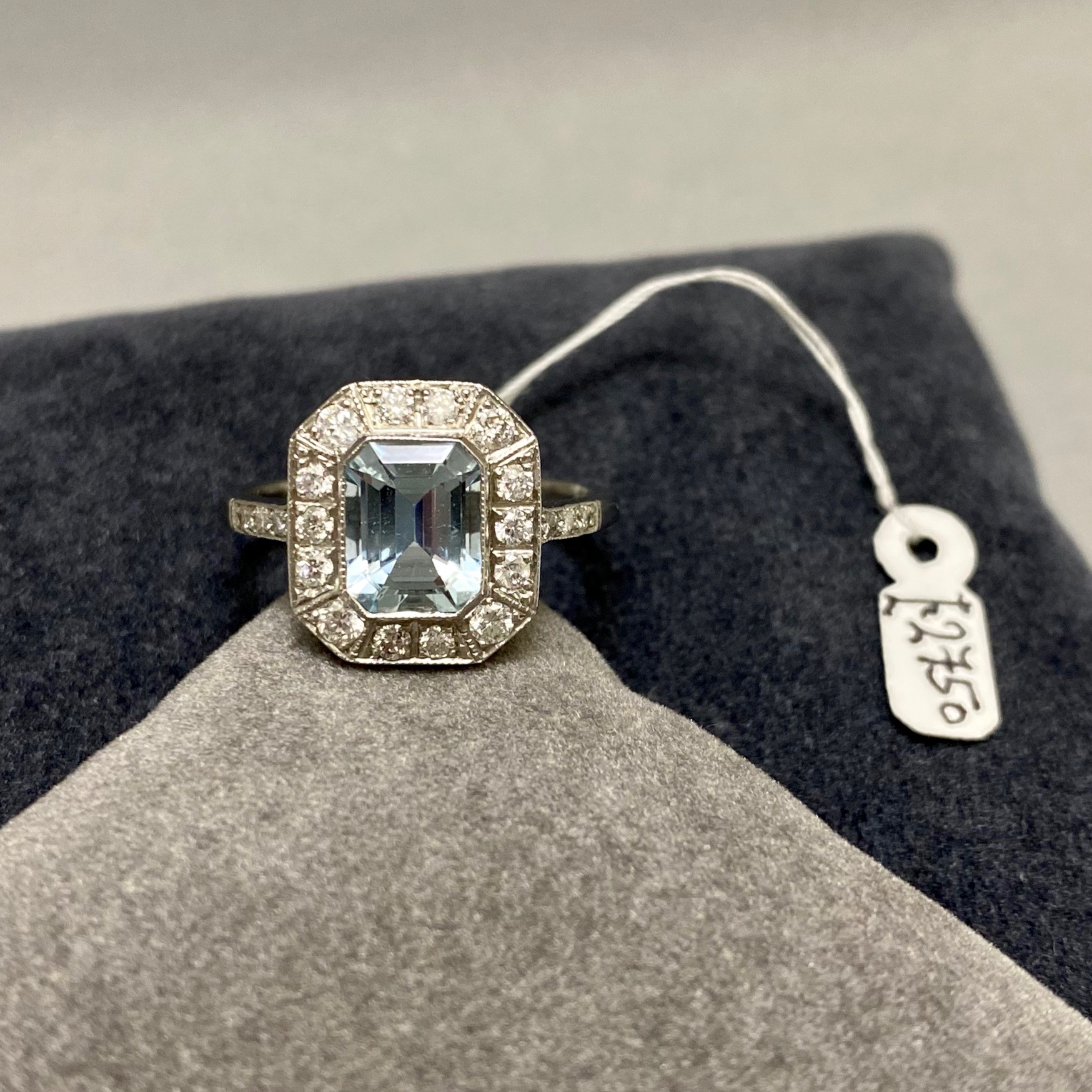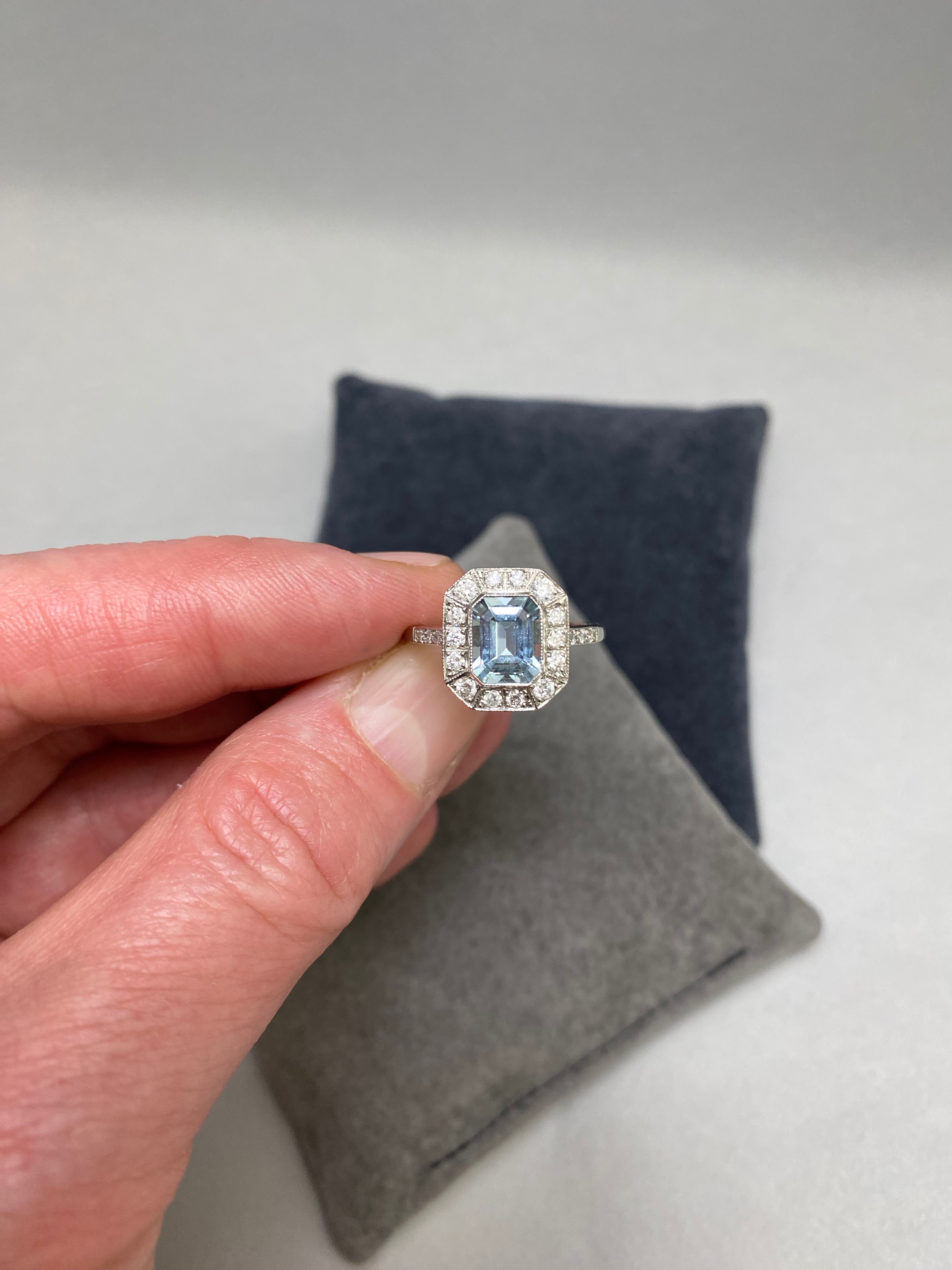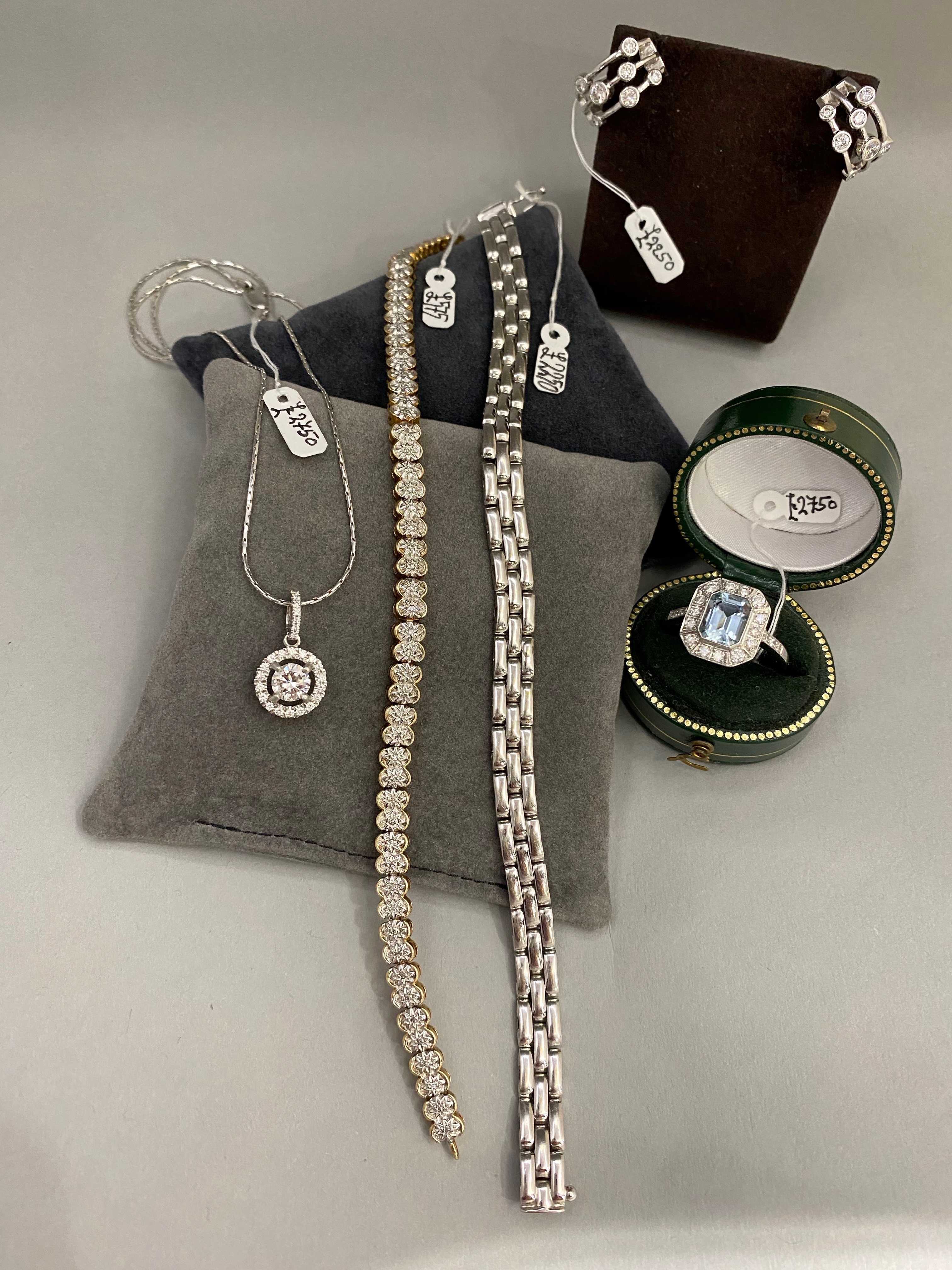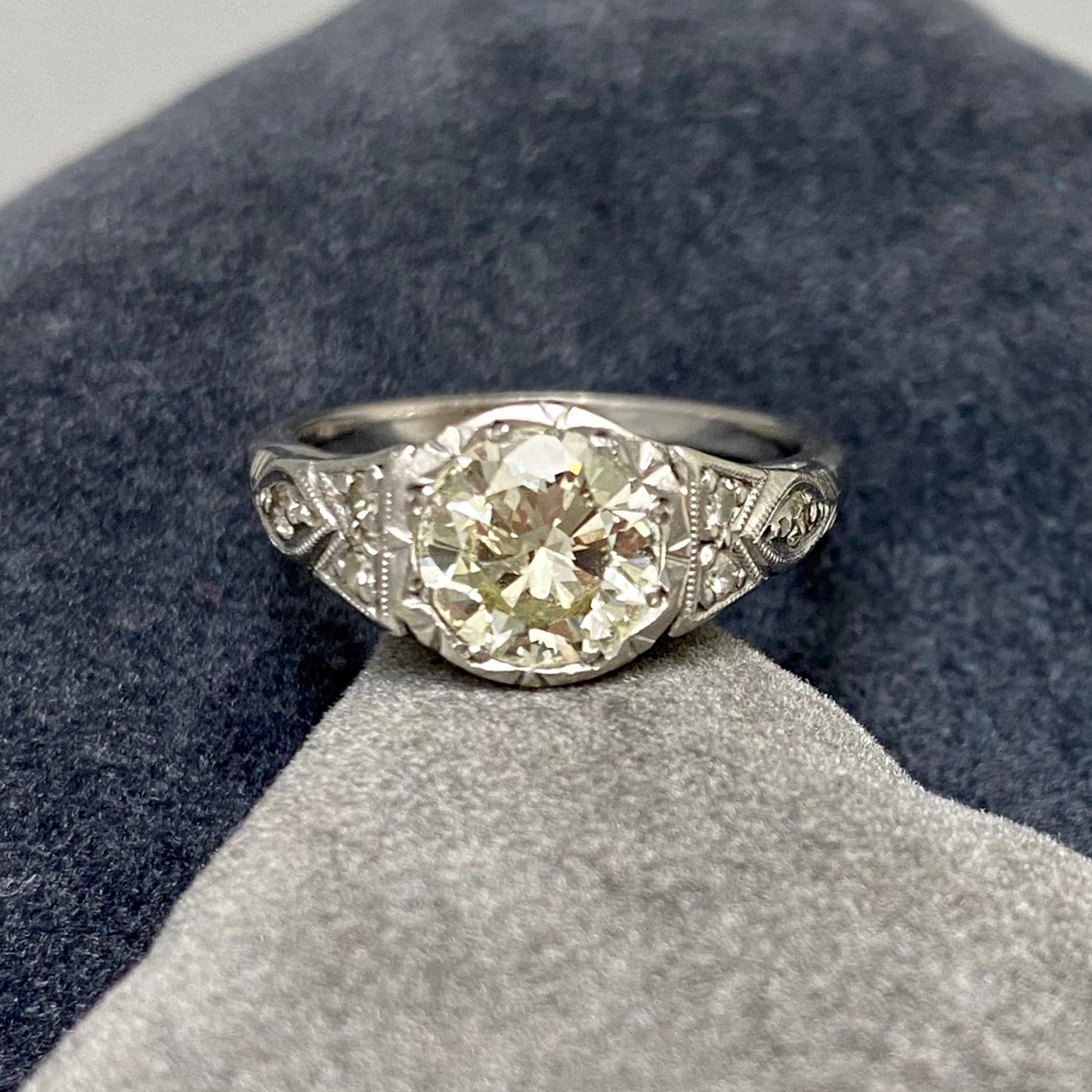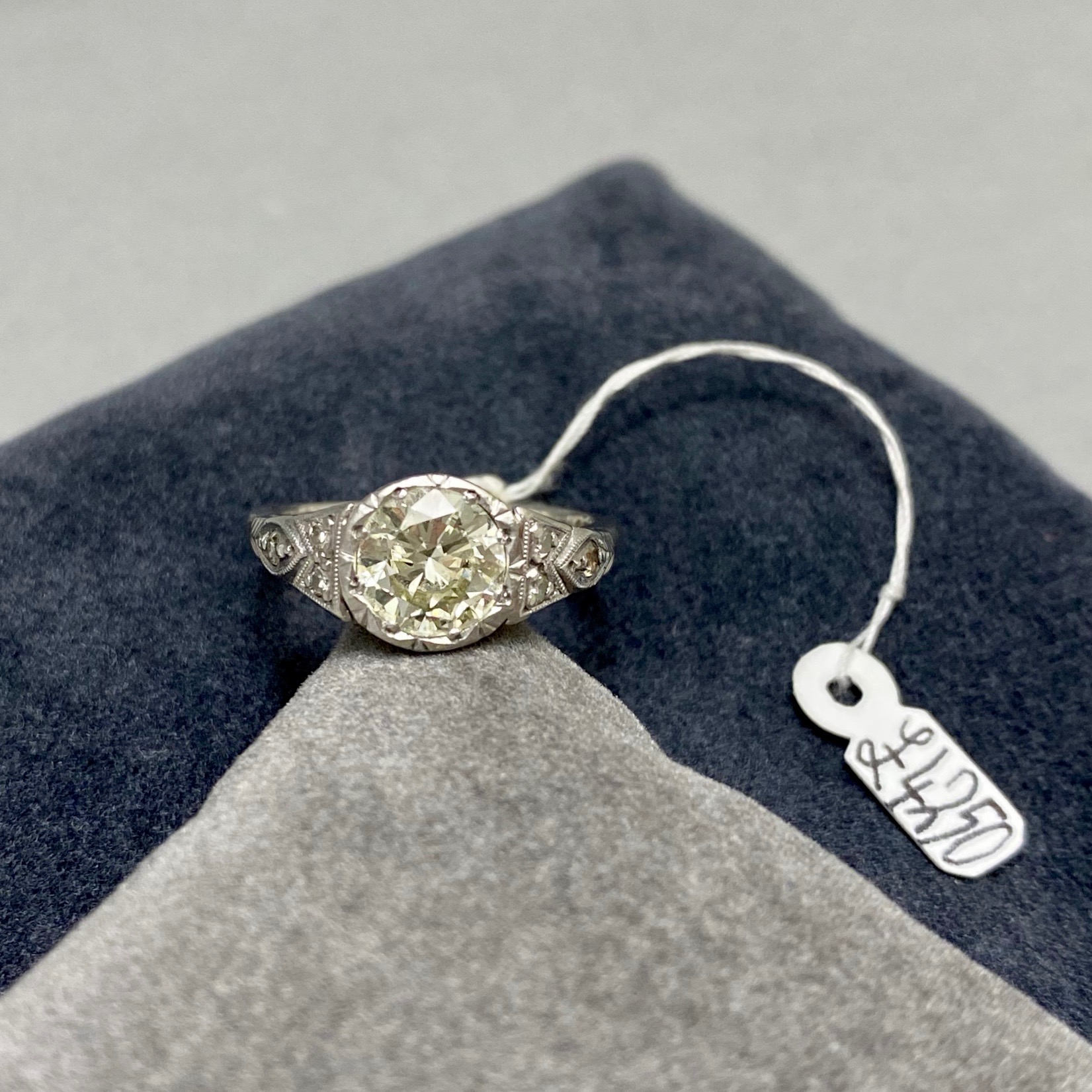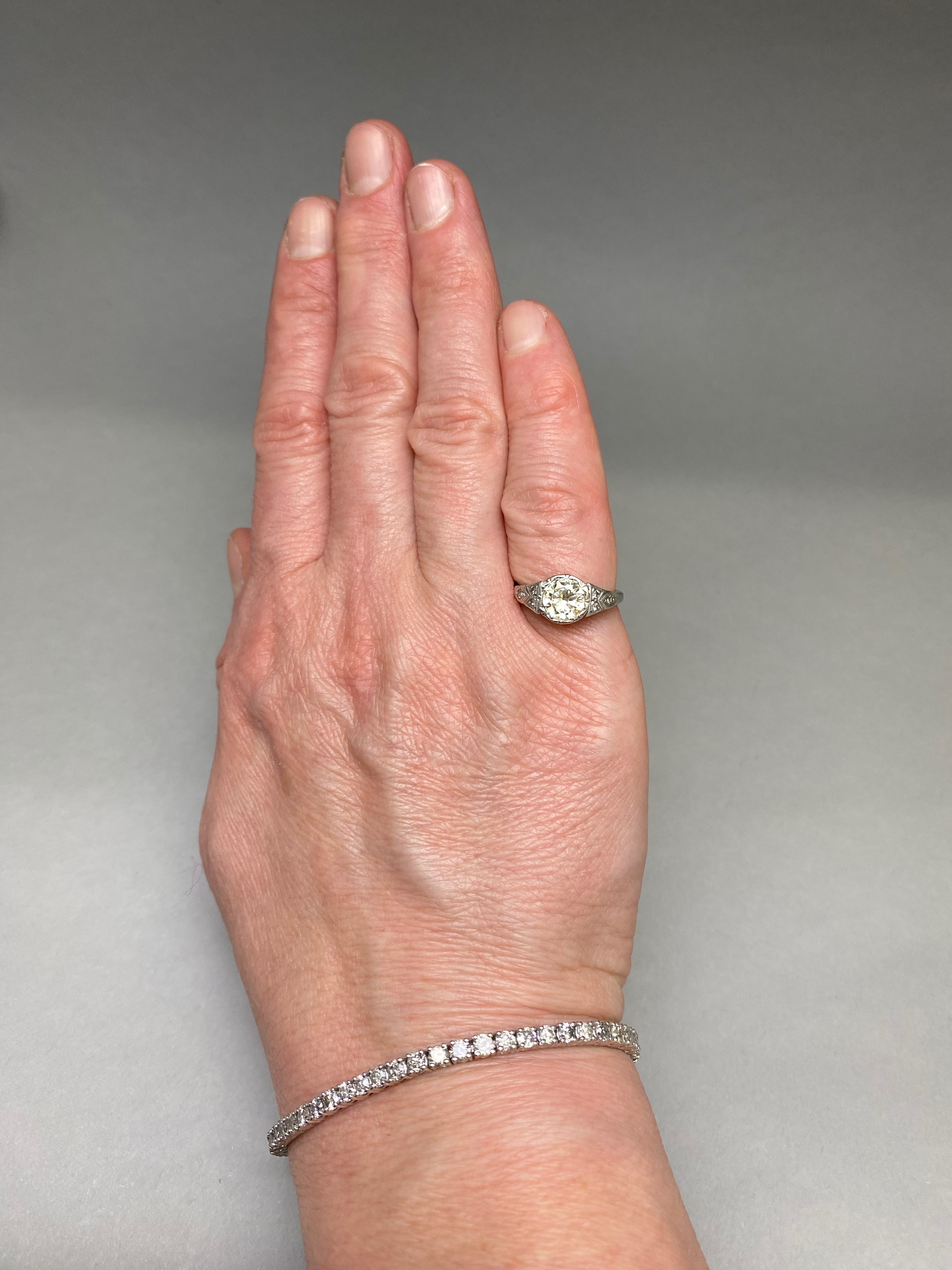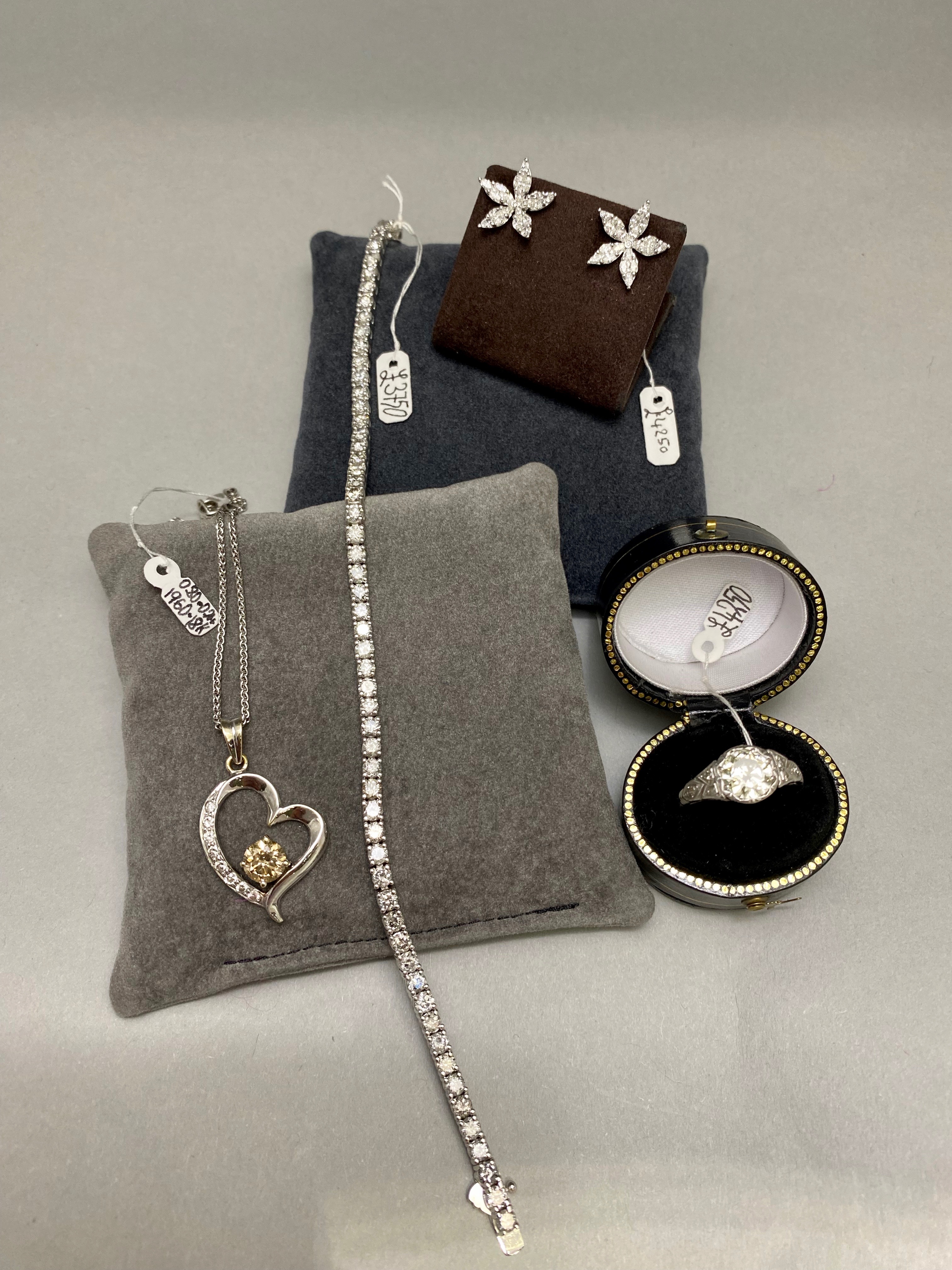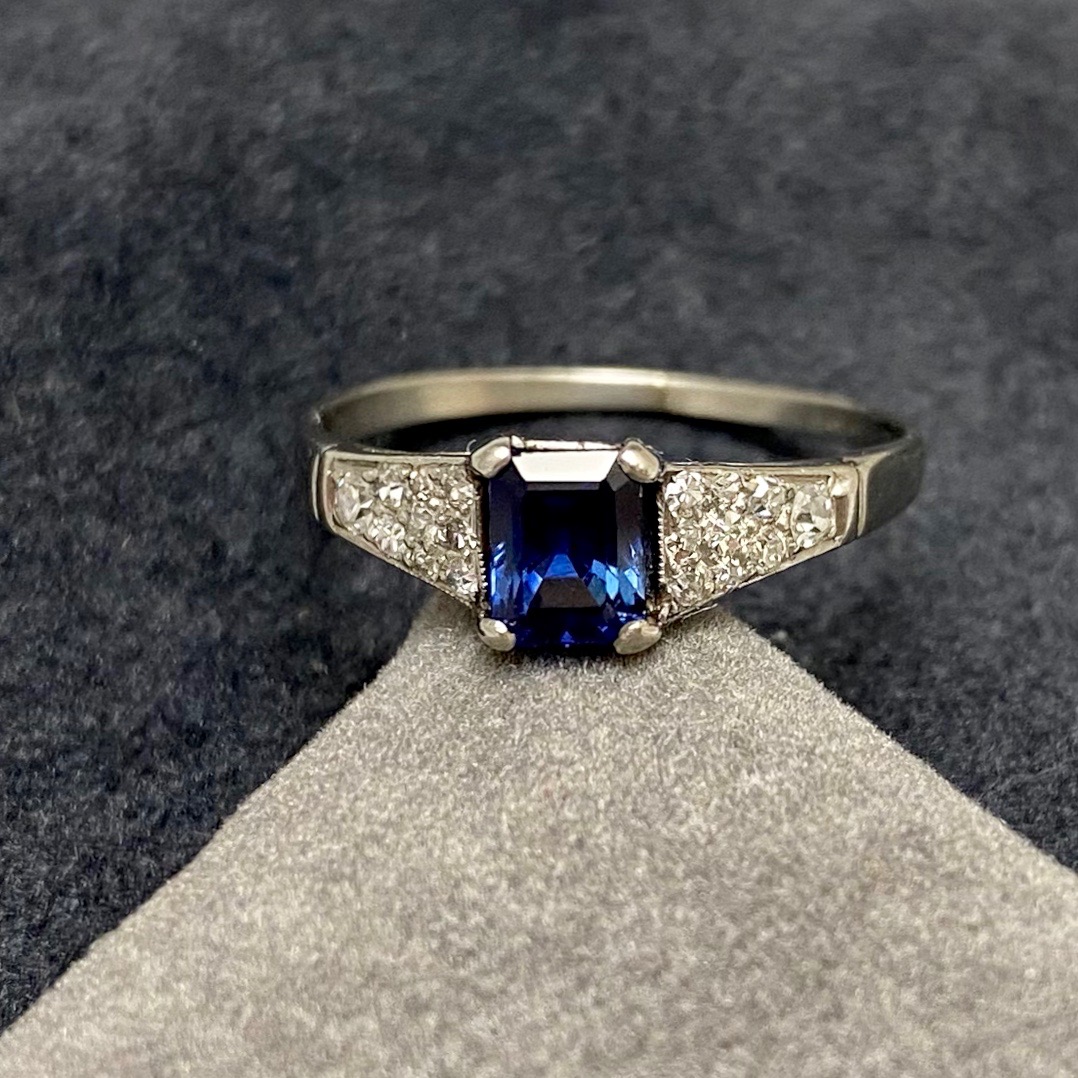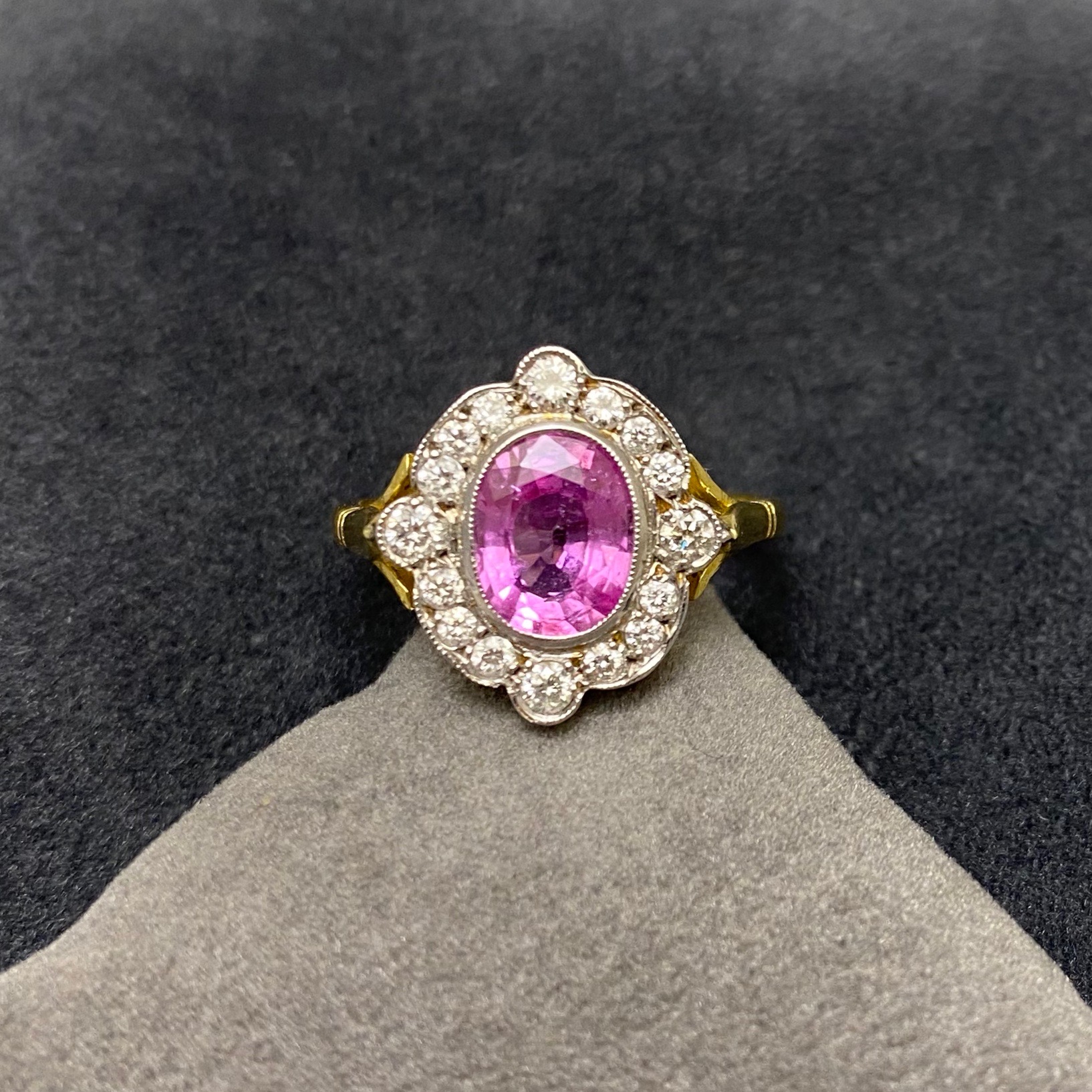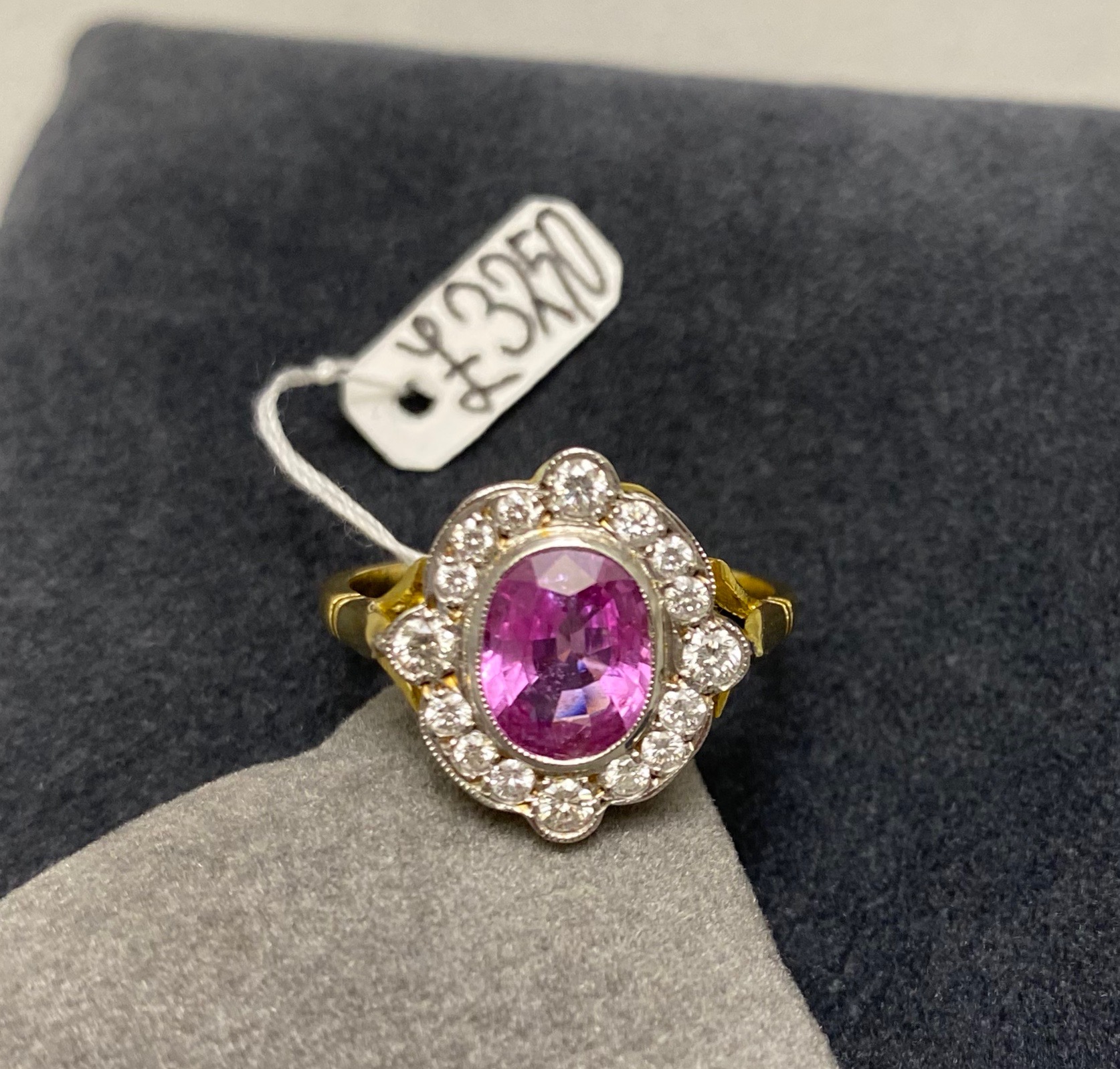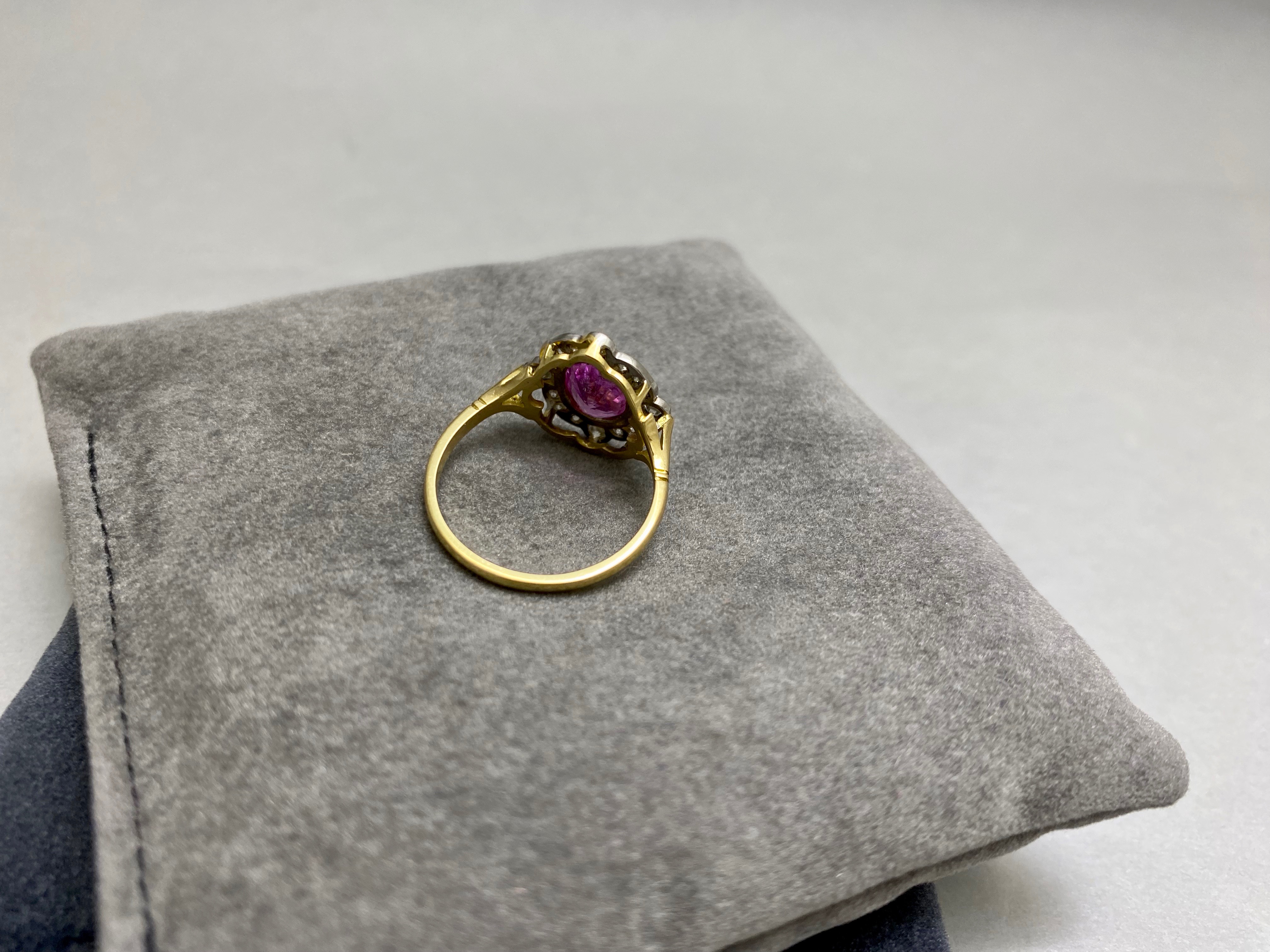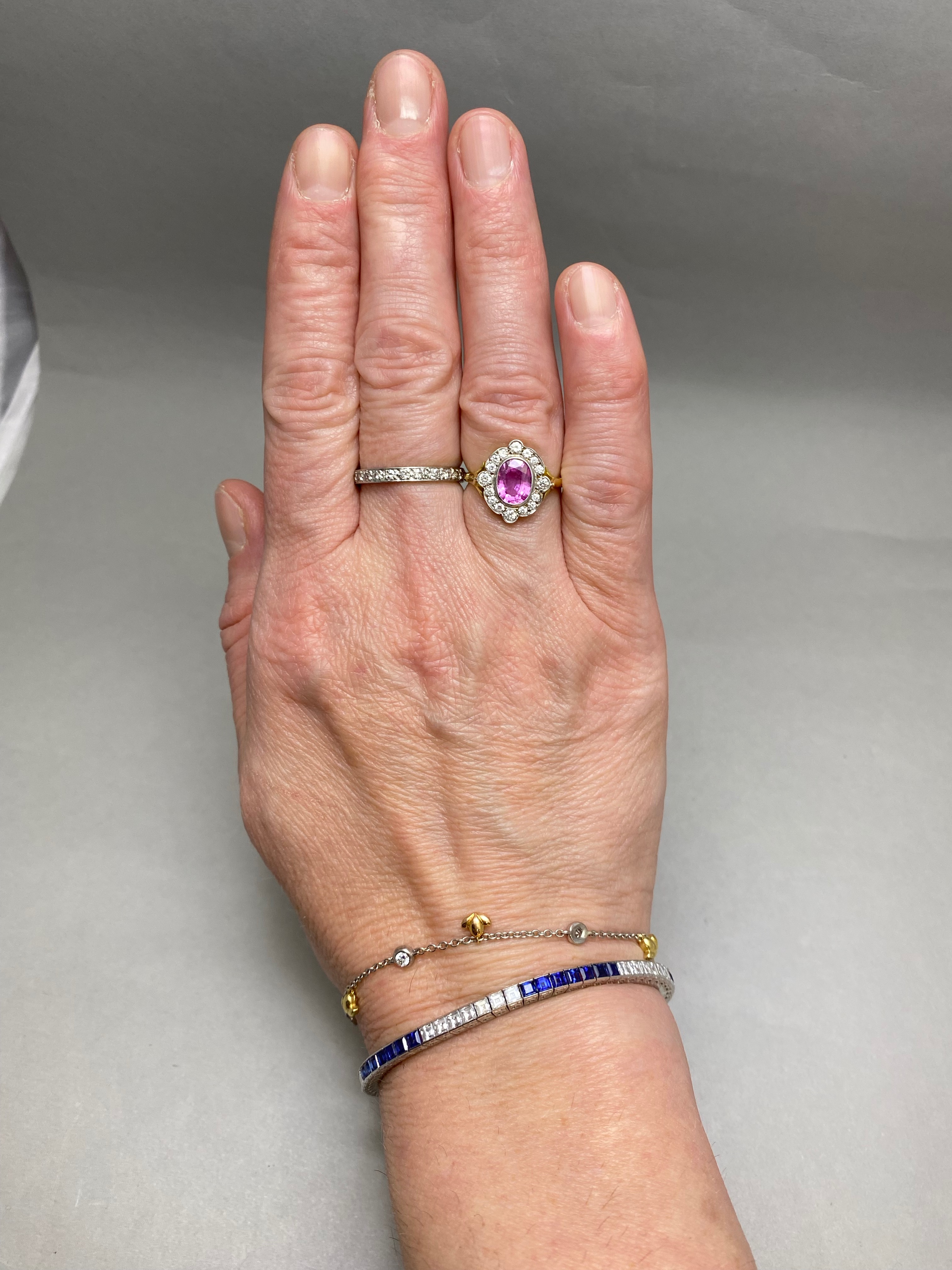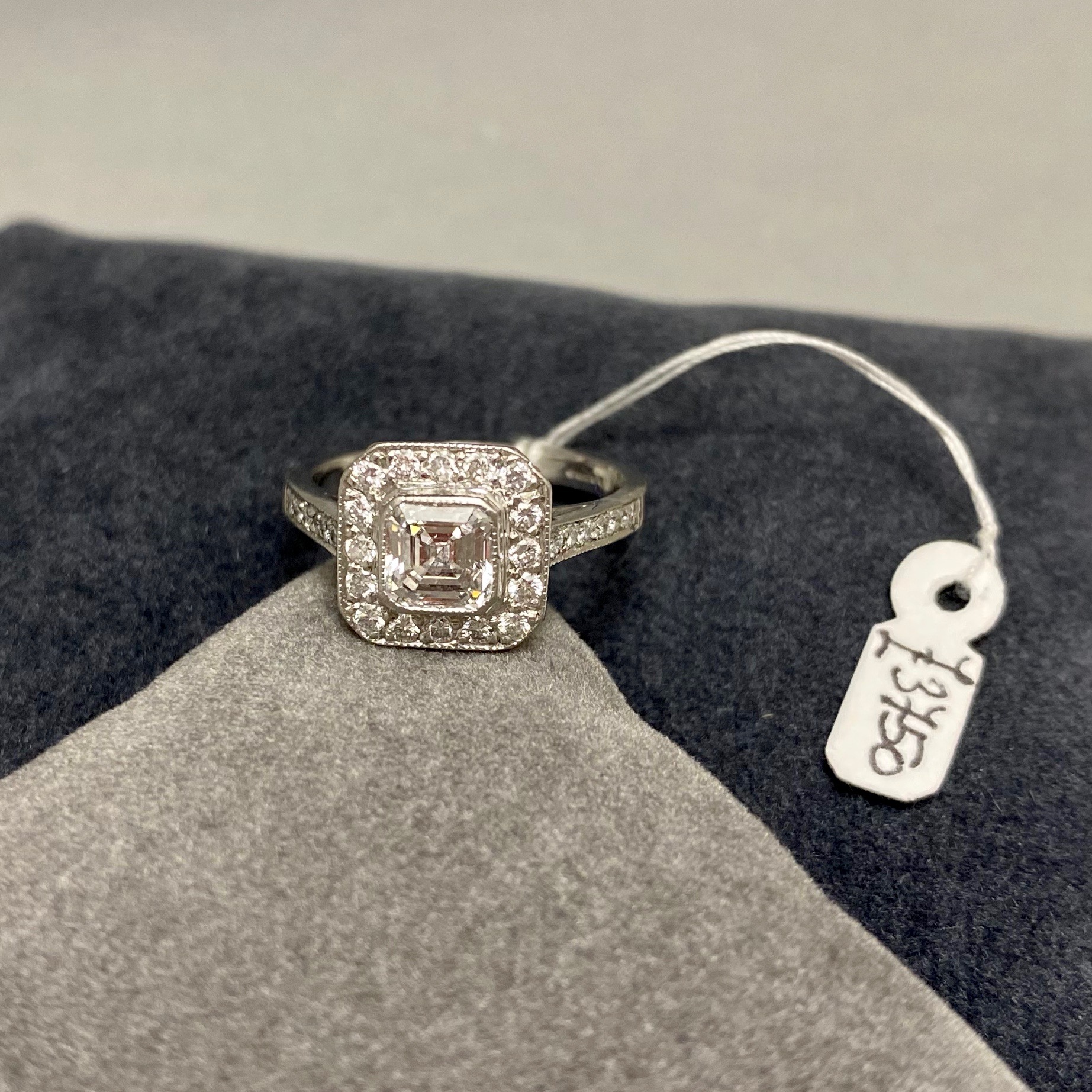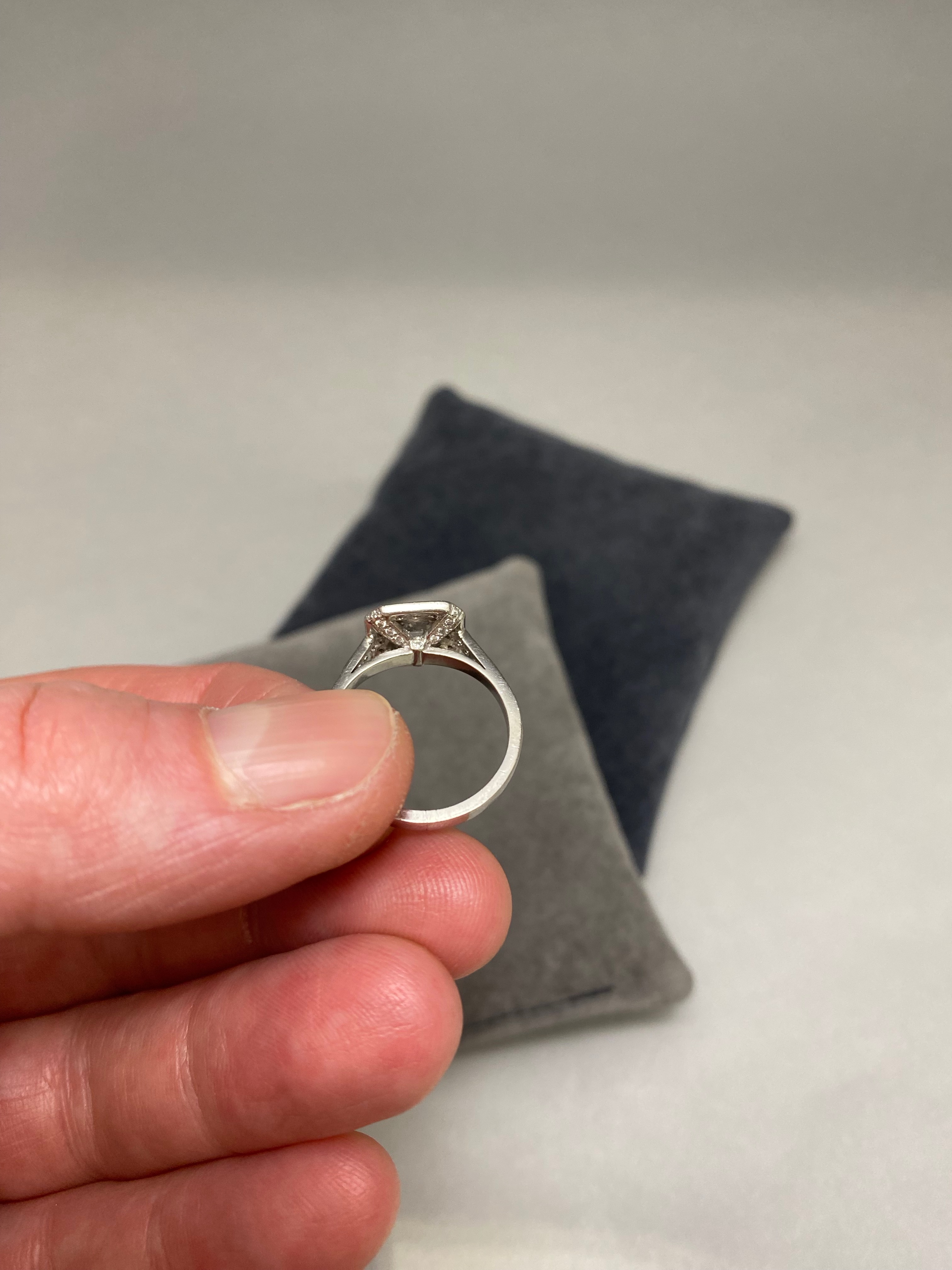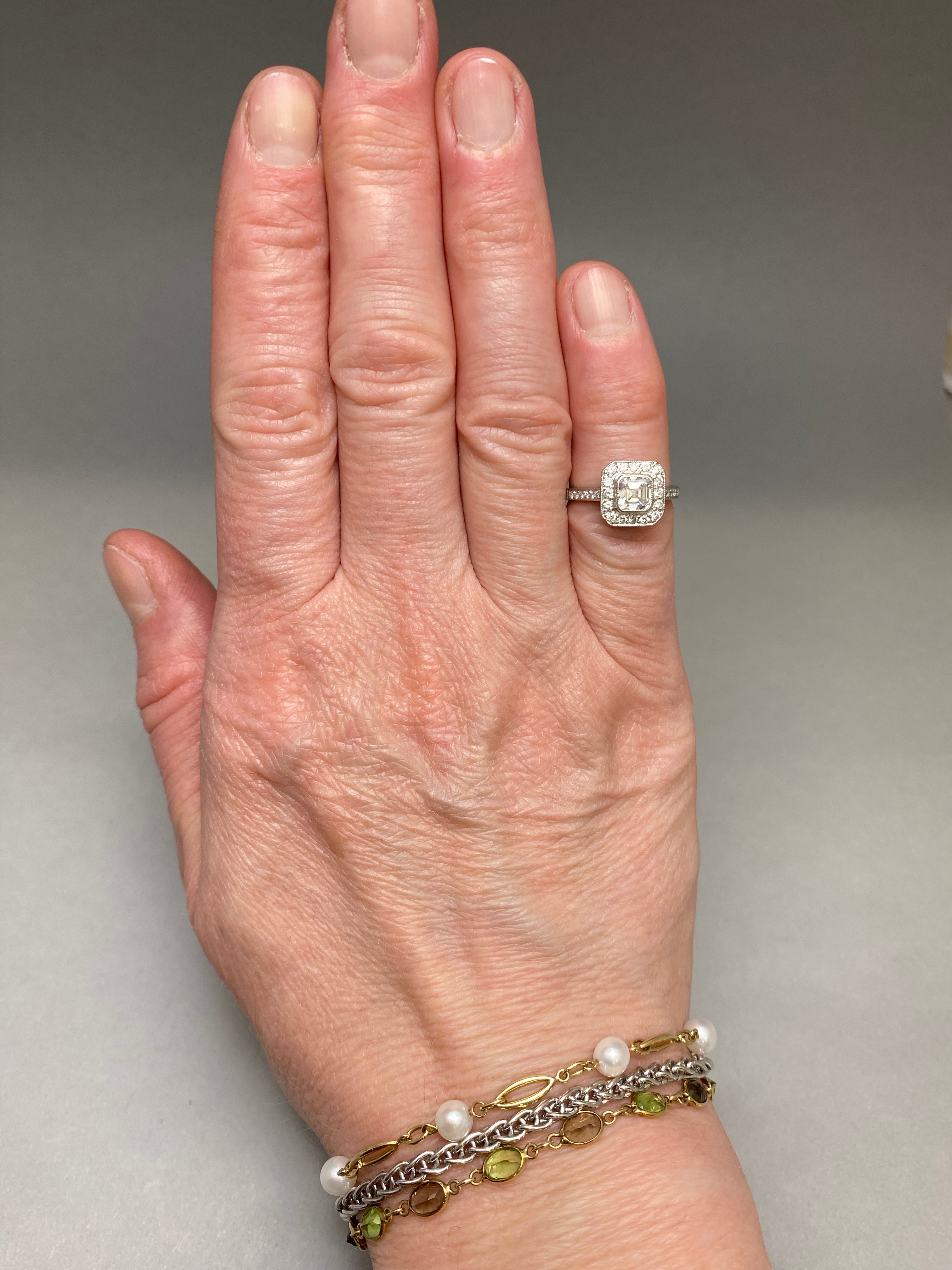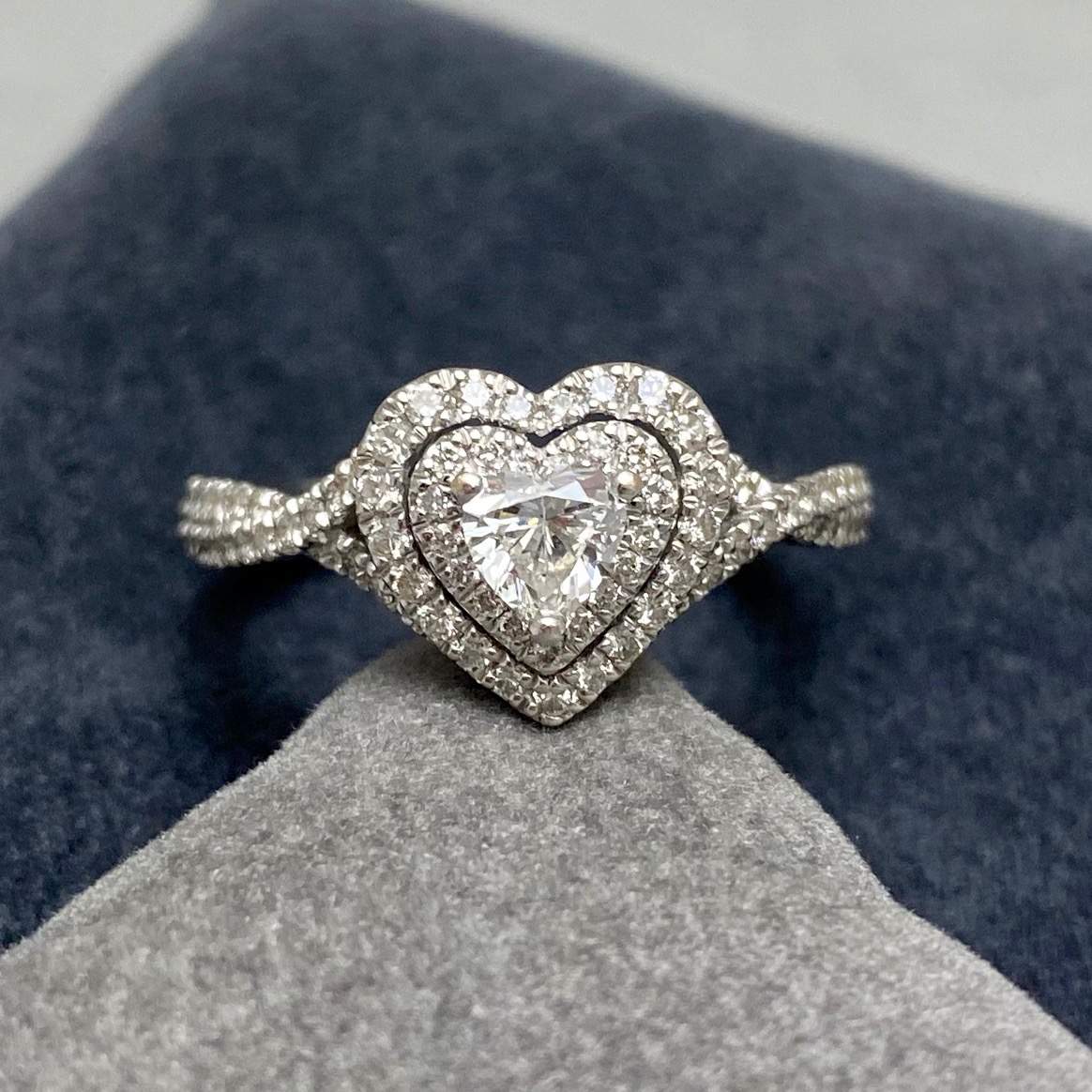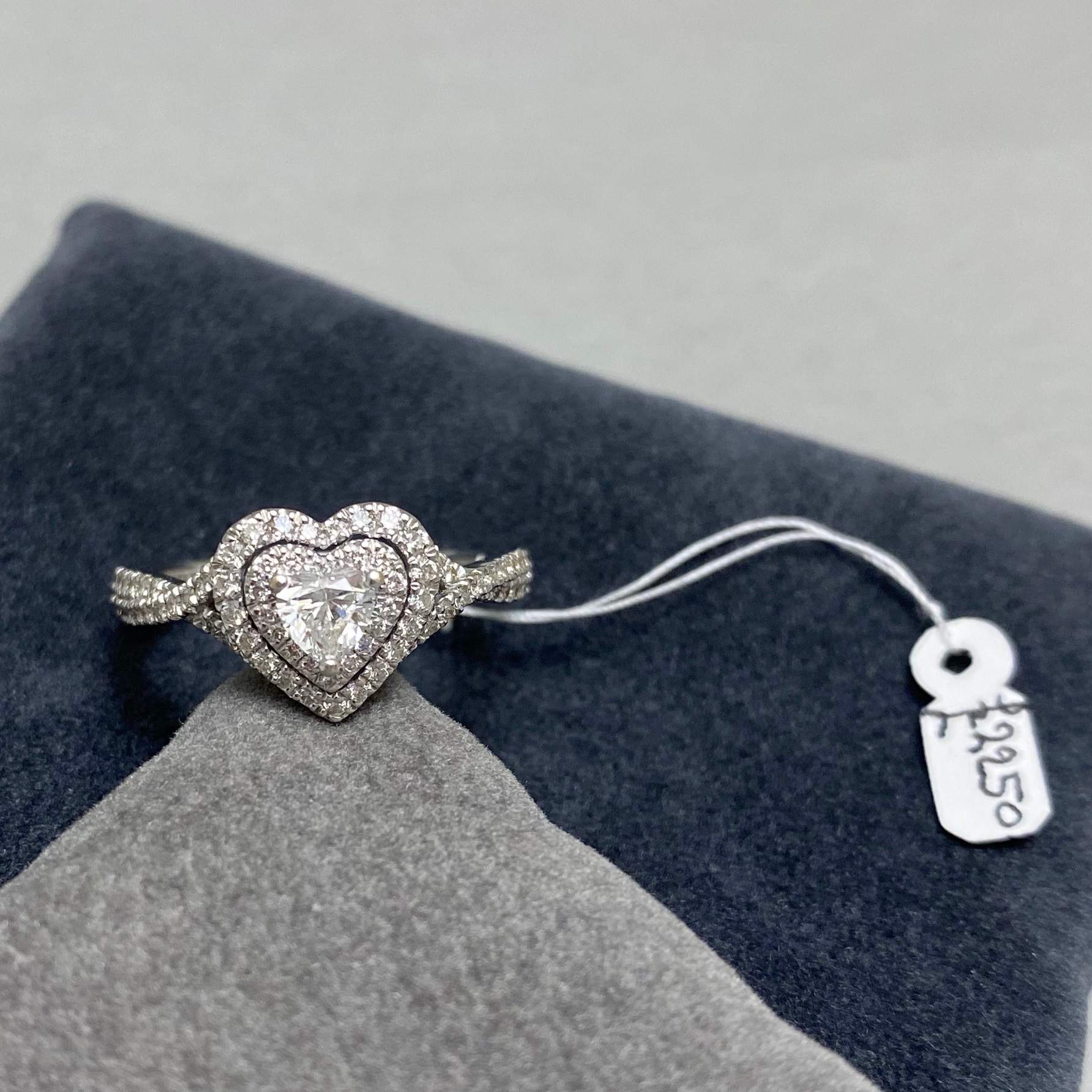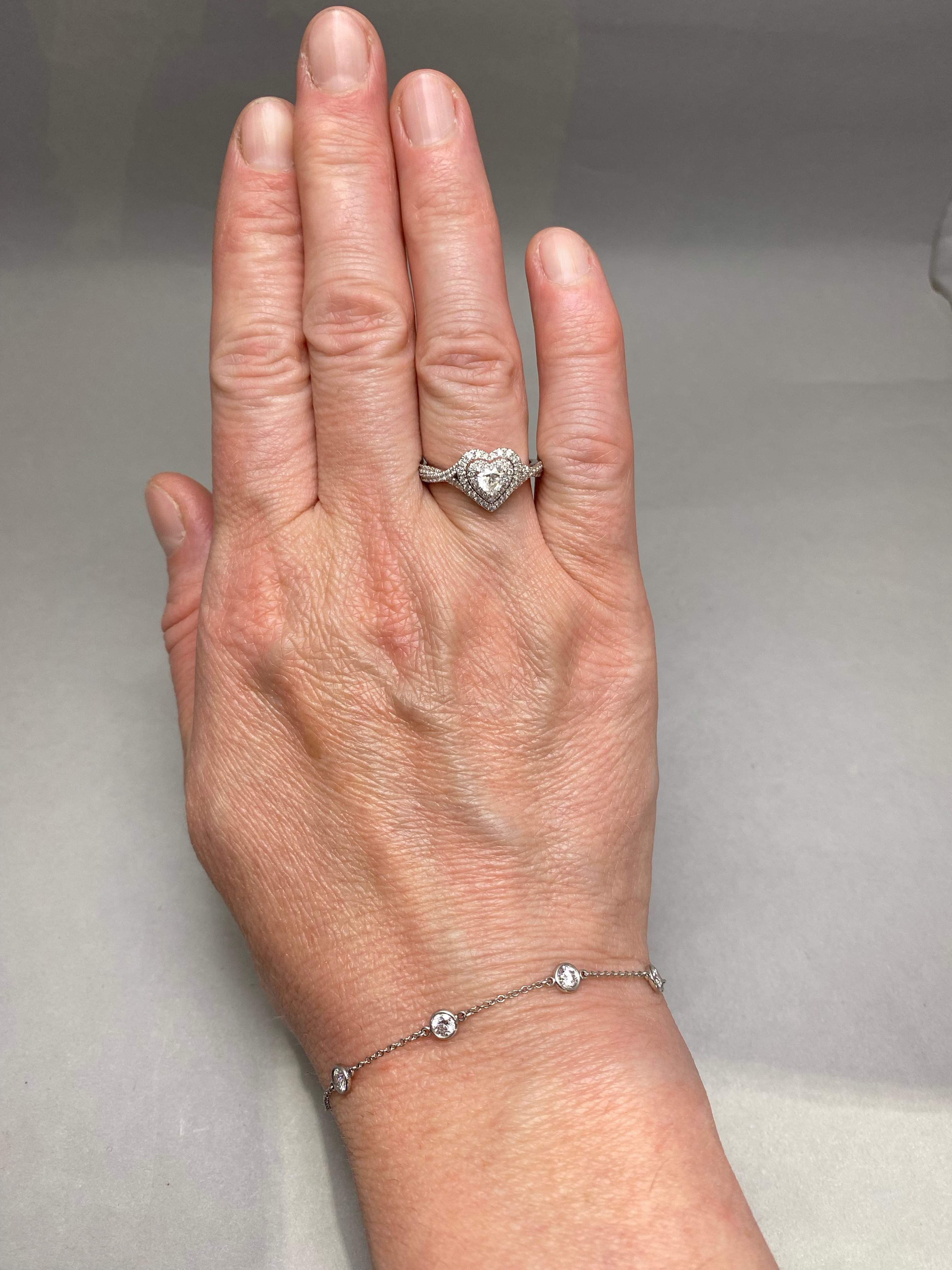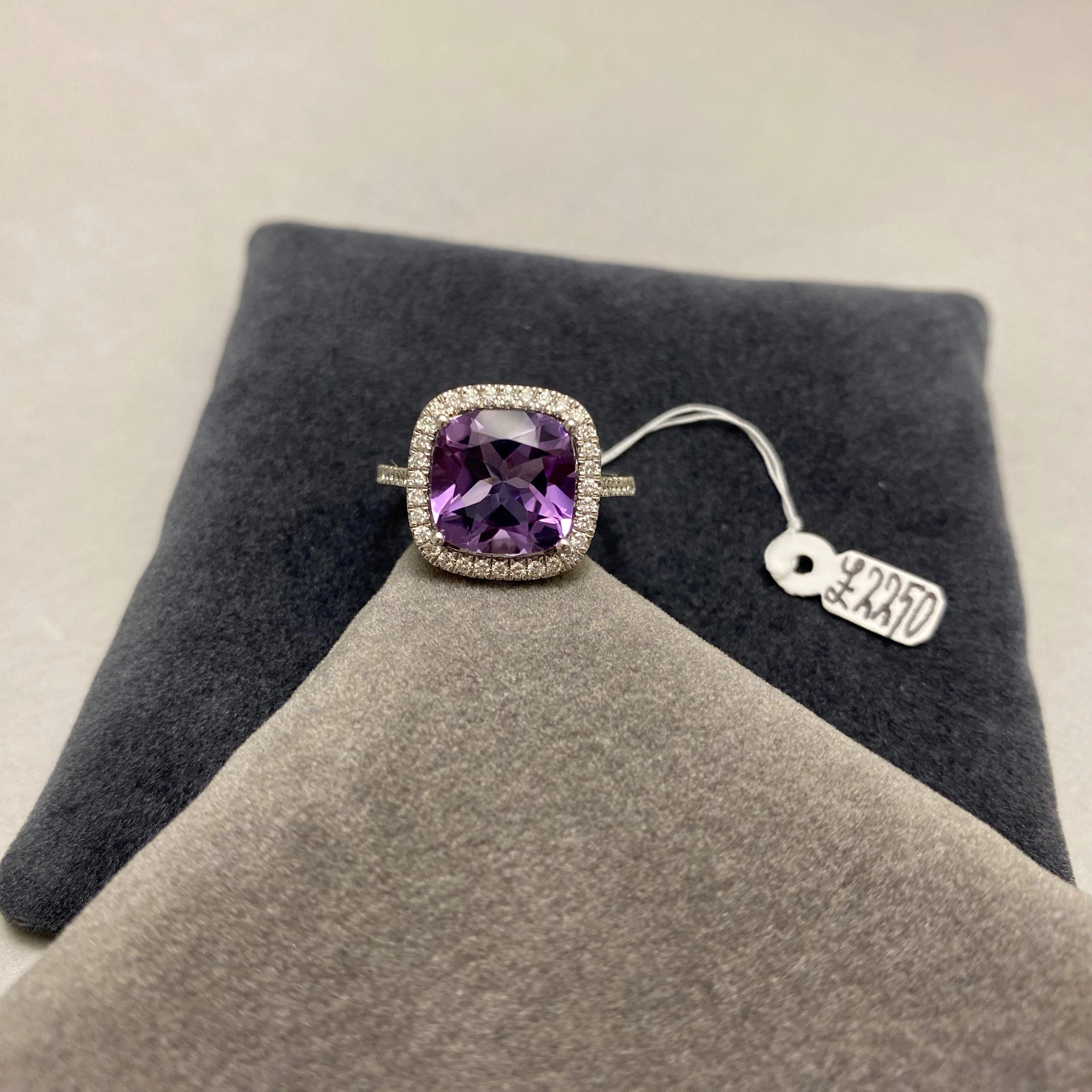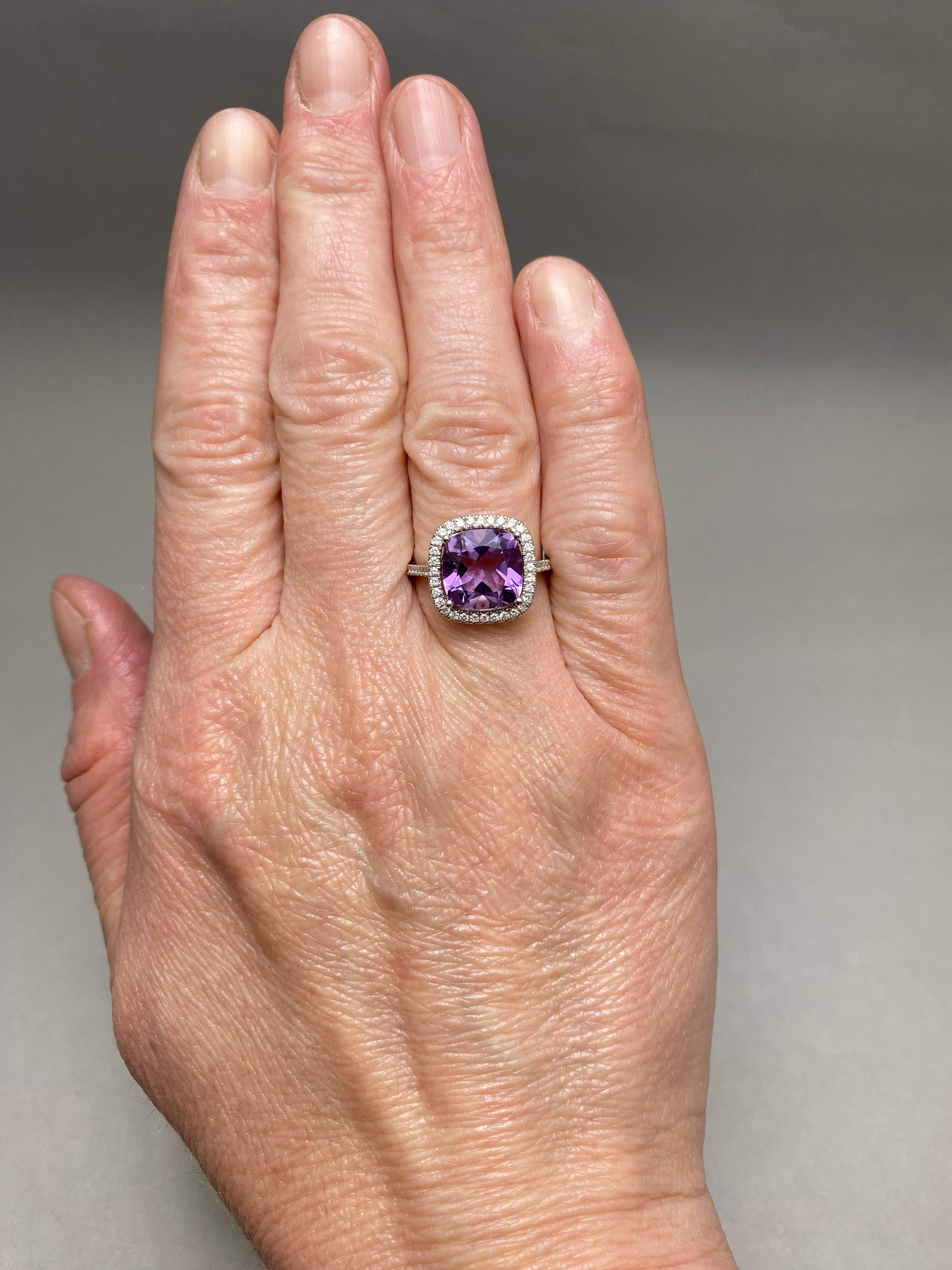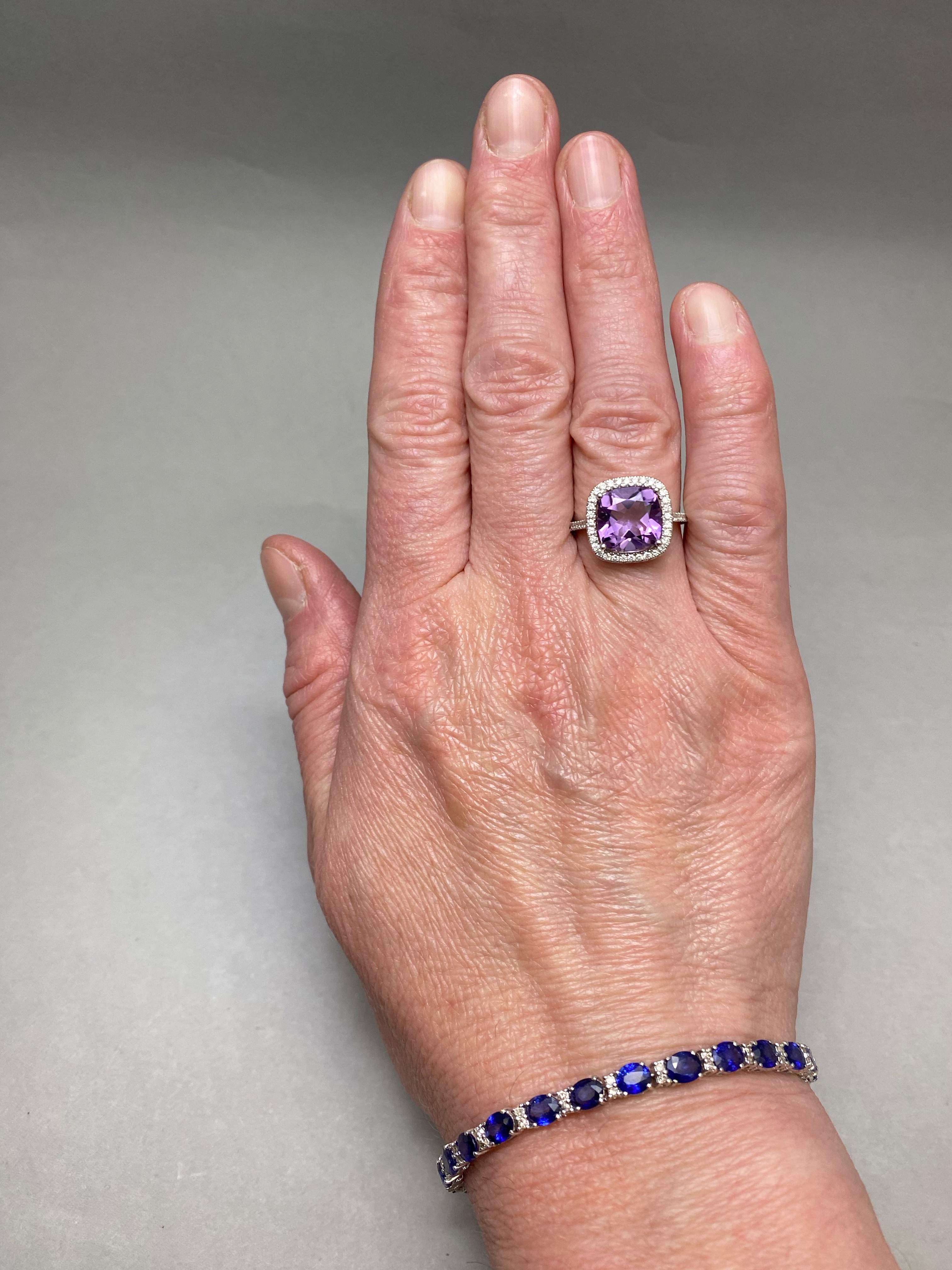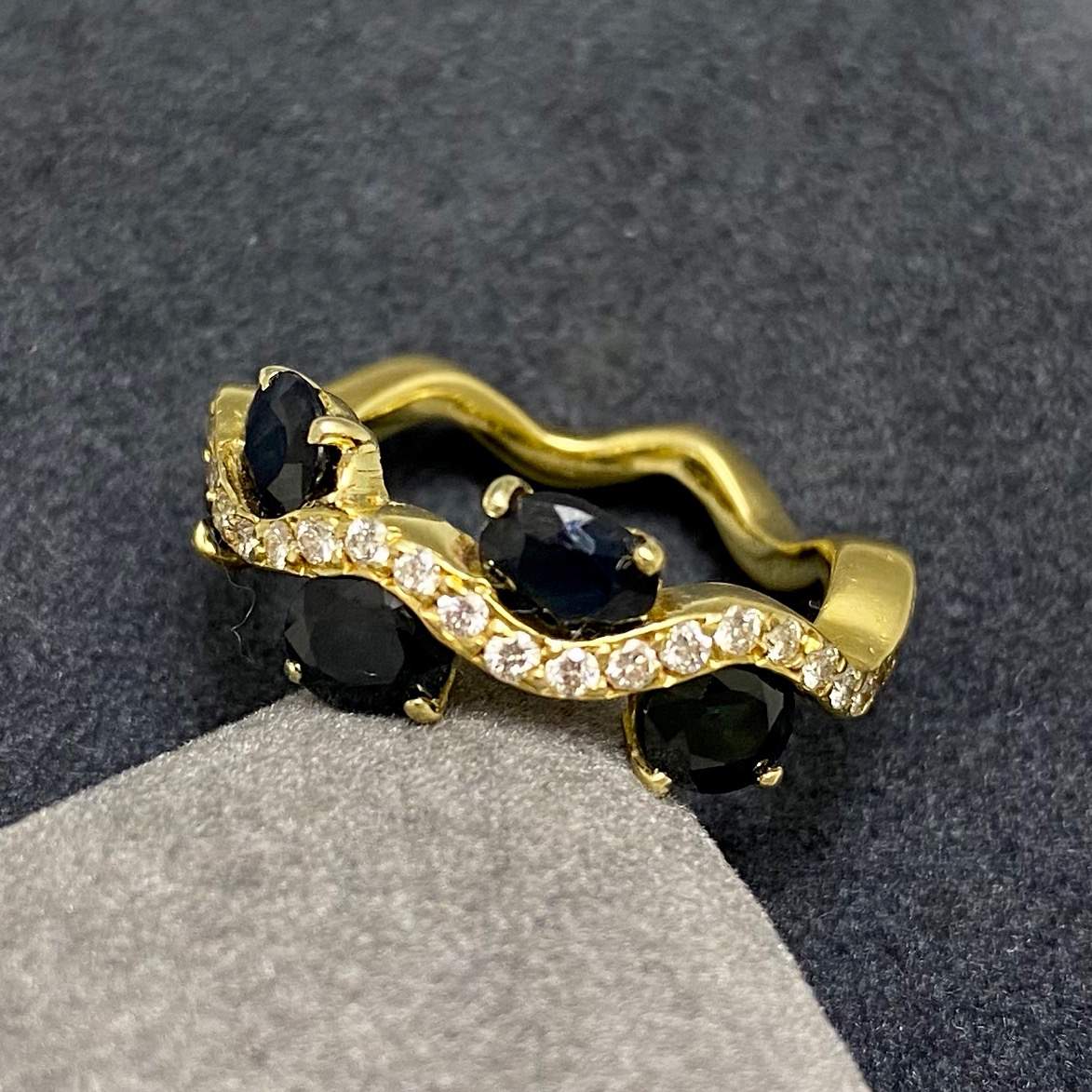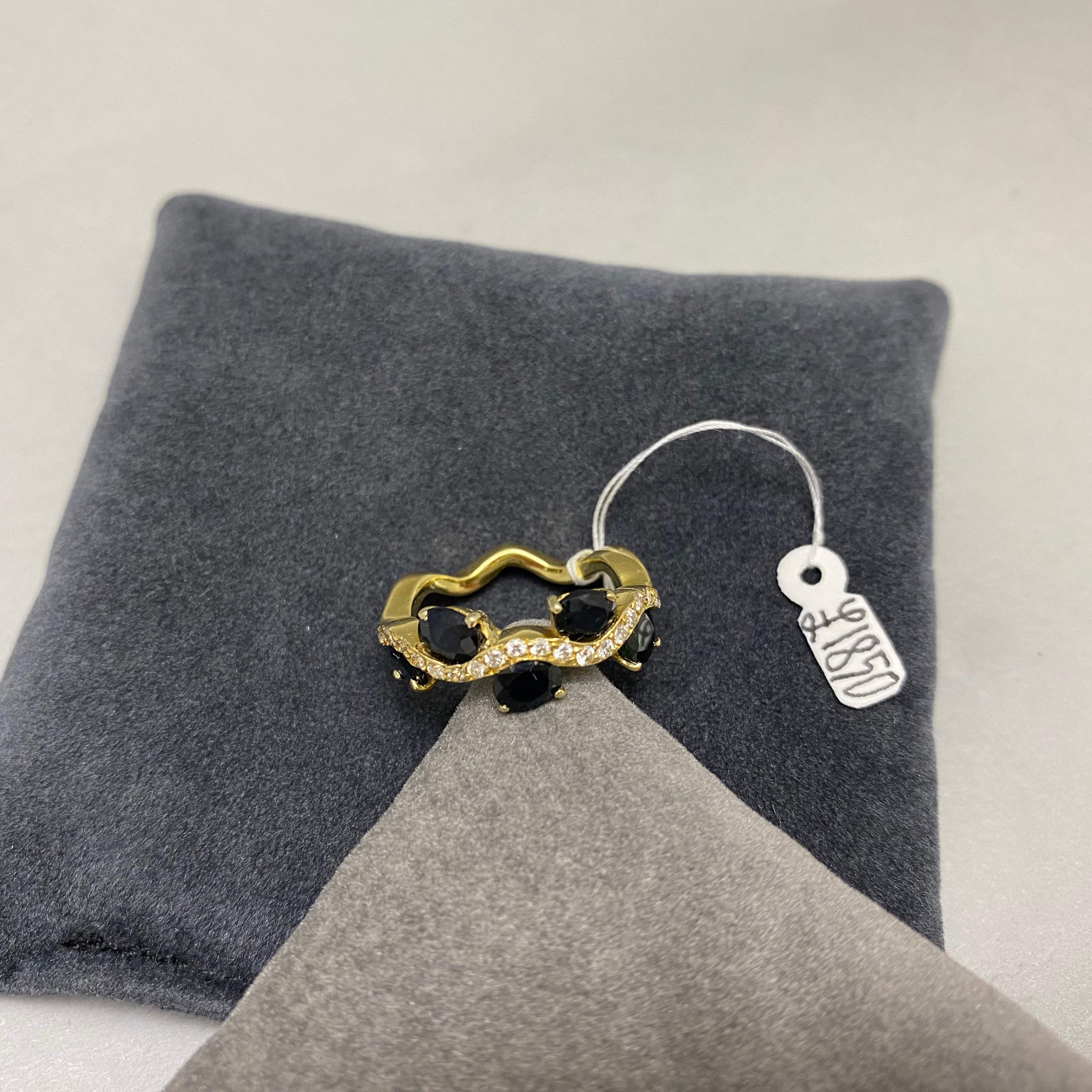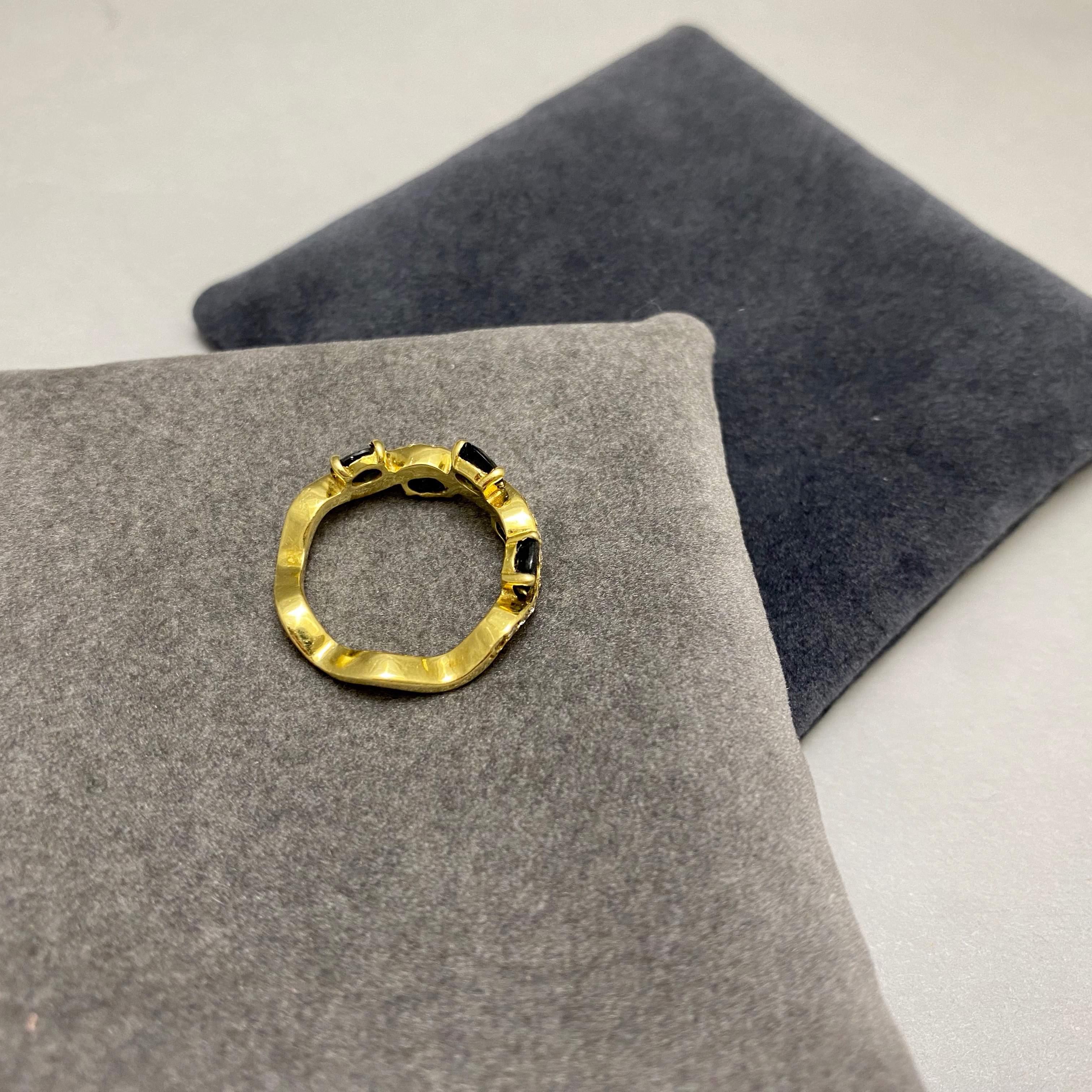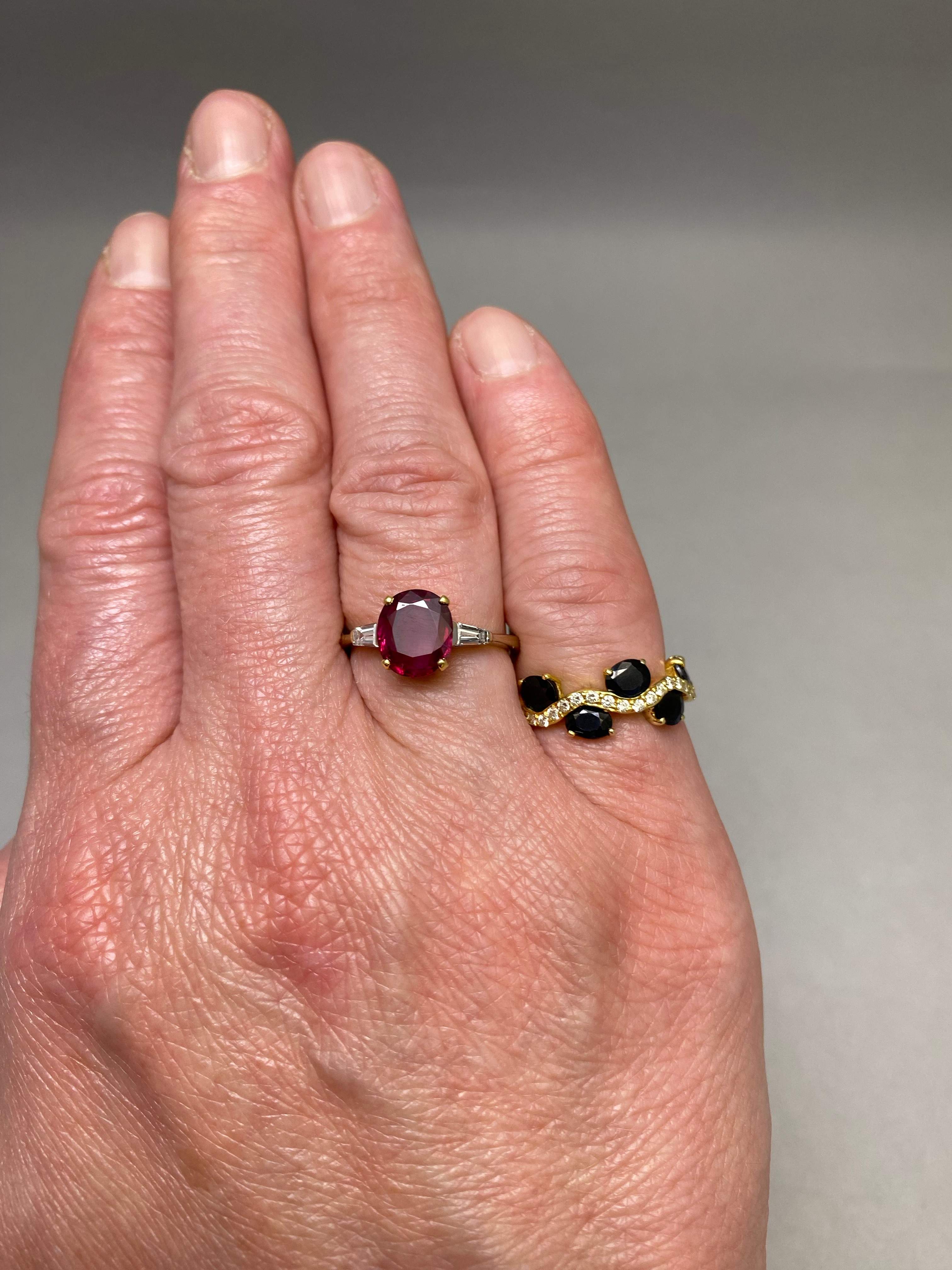The Kutchinsky family of jewellers have been making high-quality jewellery in London since the 1890s, and are best known for their pieces from the 1930s onwards. The family's history began when Hirsch Kutchinsky and his family fled Poland in 1893 and settled in London's East End, where they opened their first jewellery workshop on Commercial Road. The family had previously worked for the court of Louis of Bavaria and became well-known for their platinum and diamond jewellery.
Kutchinsky Opal Diamond Ring in 18ct Gold date circa 1970 PRICE: SOLD
Tsavorite was discovered by British geologist Campbell R. Bridges in 1967 and named by Harry Platt of Tiffany & Company (New York) who immediately recognised its potential due to its gemological pedigree and named it after the Tsavo Game Reserve in Kenya, the area of its discovery.
Tsavorite Green Garnet(1.26ct approximately) Diamond(Total weight 0.45ct approximately) Ring in Platinum PRICE: £3,750
South Sea pearls are generally much larger than other pearl types and have a unique luster quality – a soft reflection due to the large aragonite platelets that make up the pearl. They also have the thickest average nacre of all cultured pearls. These factors make South Seas both distinctive and valuable. South Sea pearls have the highest value and command the highest prices of all types of pearls.
South Sea Pearl Diamond Ring in 18ct White Gold date circa 1980 PRICE: £1,850
Aquamarine(1.50ct approximately) Diamond(Total Weight: 0.40ct approximately) 18ct Gold/Platinum Ring date circa 1950
Yellow Sapphire(2ct approximately) Diamond(total weight: 0.18ct approximately) Platinum Ring date circa 1960
Diamond (Main Diamond: Old Cut 0.40ct approximately, Small Diamonds: total weight 0.45ct approximately) Ring in Platinum date circa 1950
In the early 1800s, Englishmen William Hyde Wollaston and Smithson Tennant discovered how to make platinum malleable , effectively opening the door to platinum's extensive commercial applications. Platinum was discovered in Russia in 1822, and shortly thereafter, it began to be fashioned into decorative chains.
Aquamarine (2.50ct approximately) Diamond (Total Weight: 0.30ct approximately) Ring in Platinum date circa 1960
Aquamarine is the birthstone for March, as well as the gemstone for the 19th anniversary.
Aquamarine (2.70ct approximately) Diamond (Total Weight: 0.45ct approximately) Ring in Platinum date circa 1960
Heart Shape Diamond (D colour, VS2 clarity, 1.62ct estimated) Baguette Diamond (Total Weight 0.60ct approximately) Ring in Platinum date circa 1980
SOLD
Aquamarine (1ct approximately) Diamond (Total Weight 0.40ct approximately) Ring in Platinum date circa 1980
Old Cut Diamond (1.05ct VS1-VS2 clarity I-J colour estimated) Ring in Platinum date circa 1920
Ceylon Sapphire (0.40ct approximately) Diamond (Total Weight 0.20ct approximately) Platinum Ring date circa 1940
Q:What does the Ceylon sapphire symbolise?
A:For many centuries, Ceylon blue sapphires have been treasured by royal families around the world. Renowned for their allure and range of blues, sapphires are considered a symbol of love, power, loyalty, royalty and wisdom.
Diamond Ring in 18ct White Gold by VERA WANG, LOVE collection
In 2011, Vera Wang partnered with Zales to create the Vera Wang LOVE Collection—a line of engagement rings, wedding bands and fashion jewellery—as an extension of her signature elegant sensibility. Much like her work in bridal fashion, Vera Wang's diamond creations are all inspired by love. “It's a love for fashion. Although each piece is designed by Vera Wang, the collection still allows wearers to customise the final product, including the shape, setting, style, and metal.
















